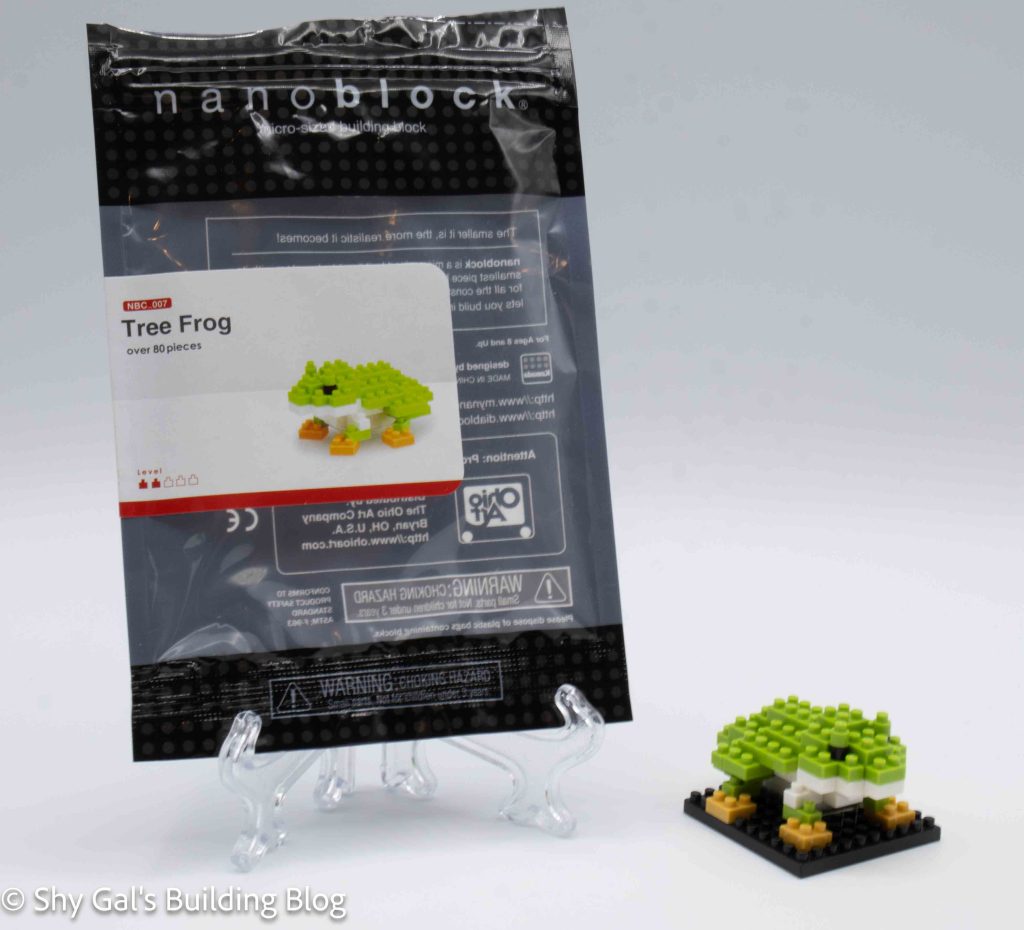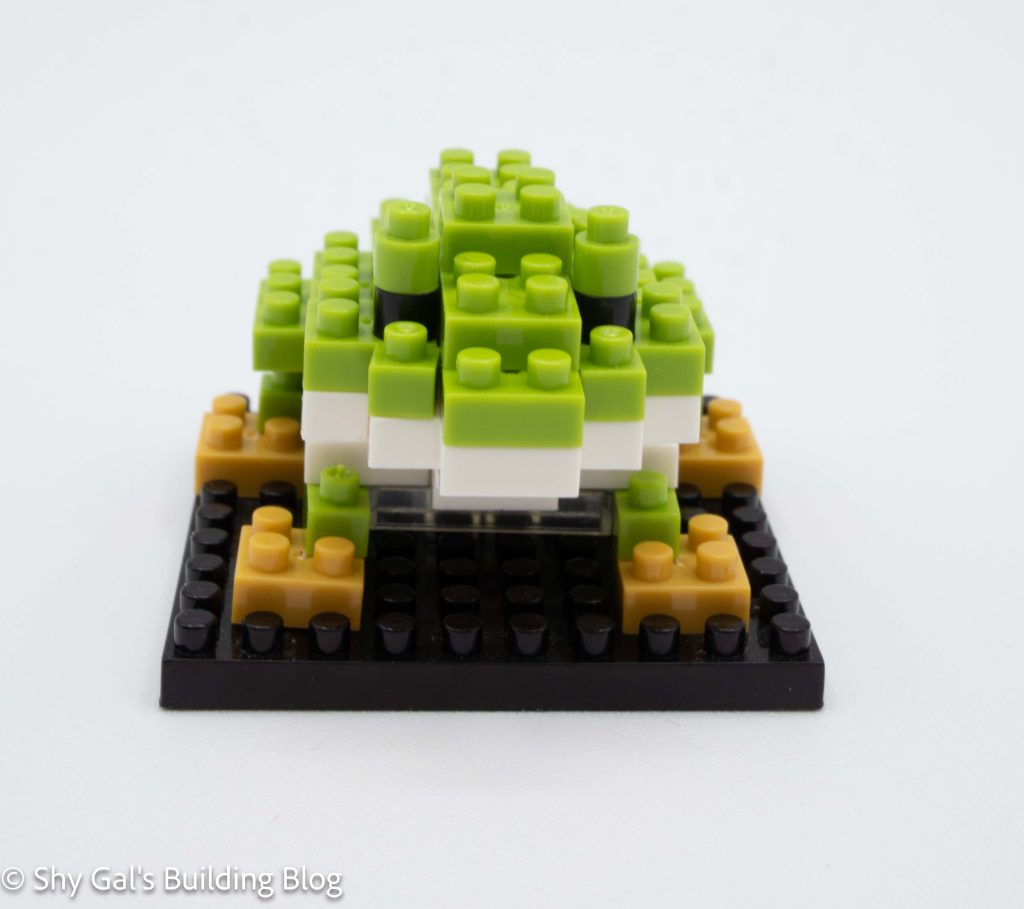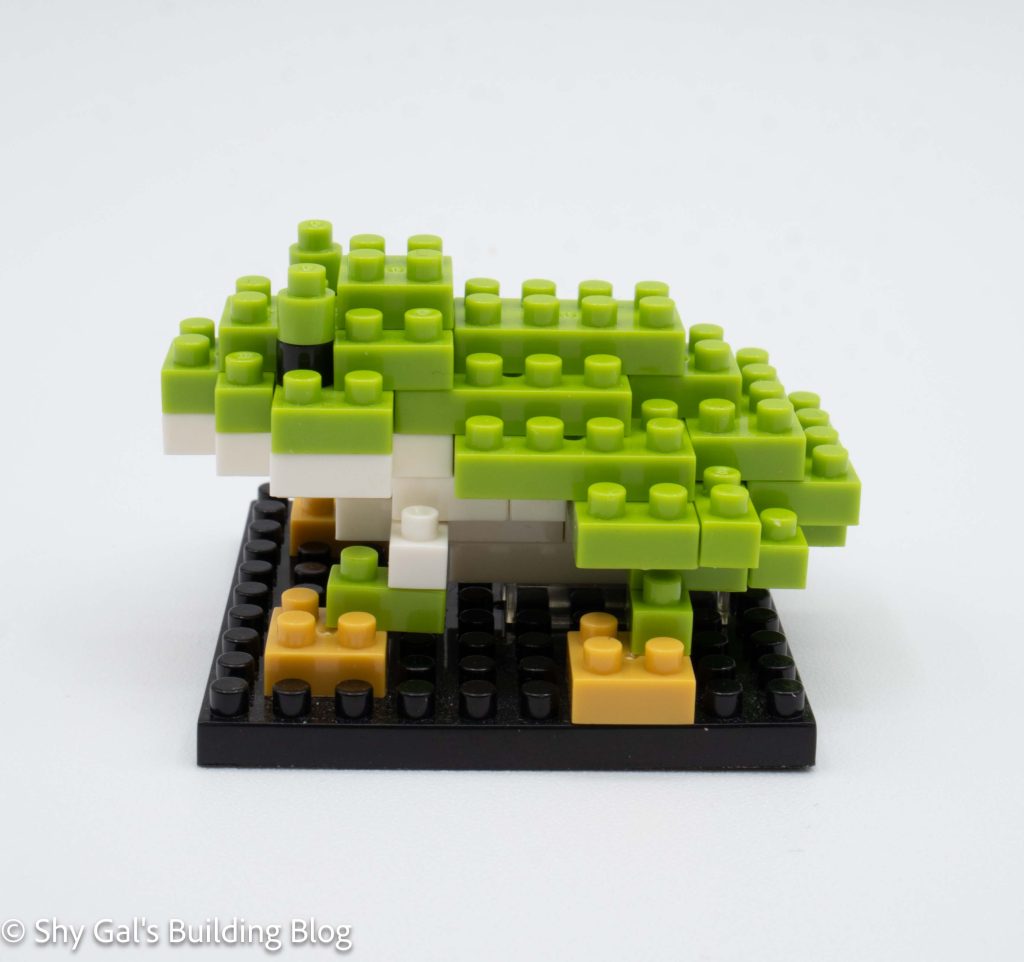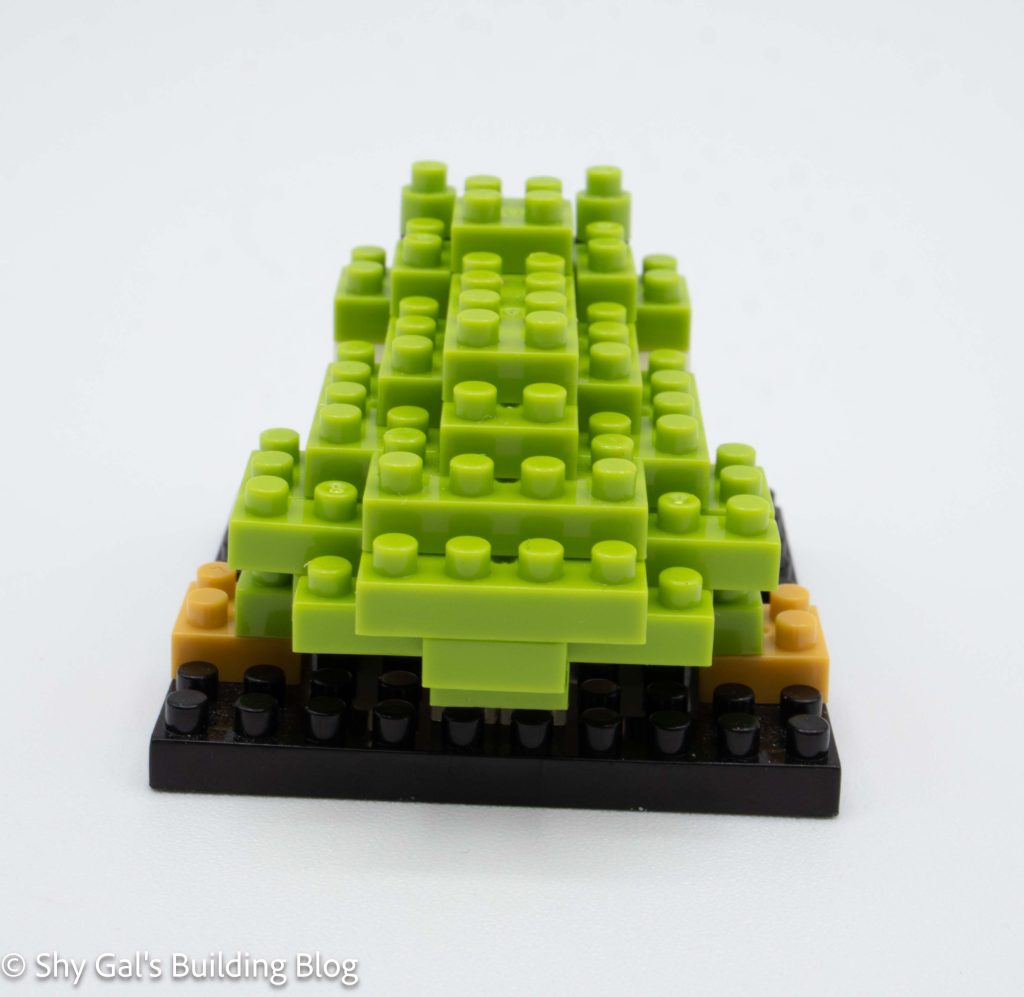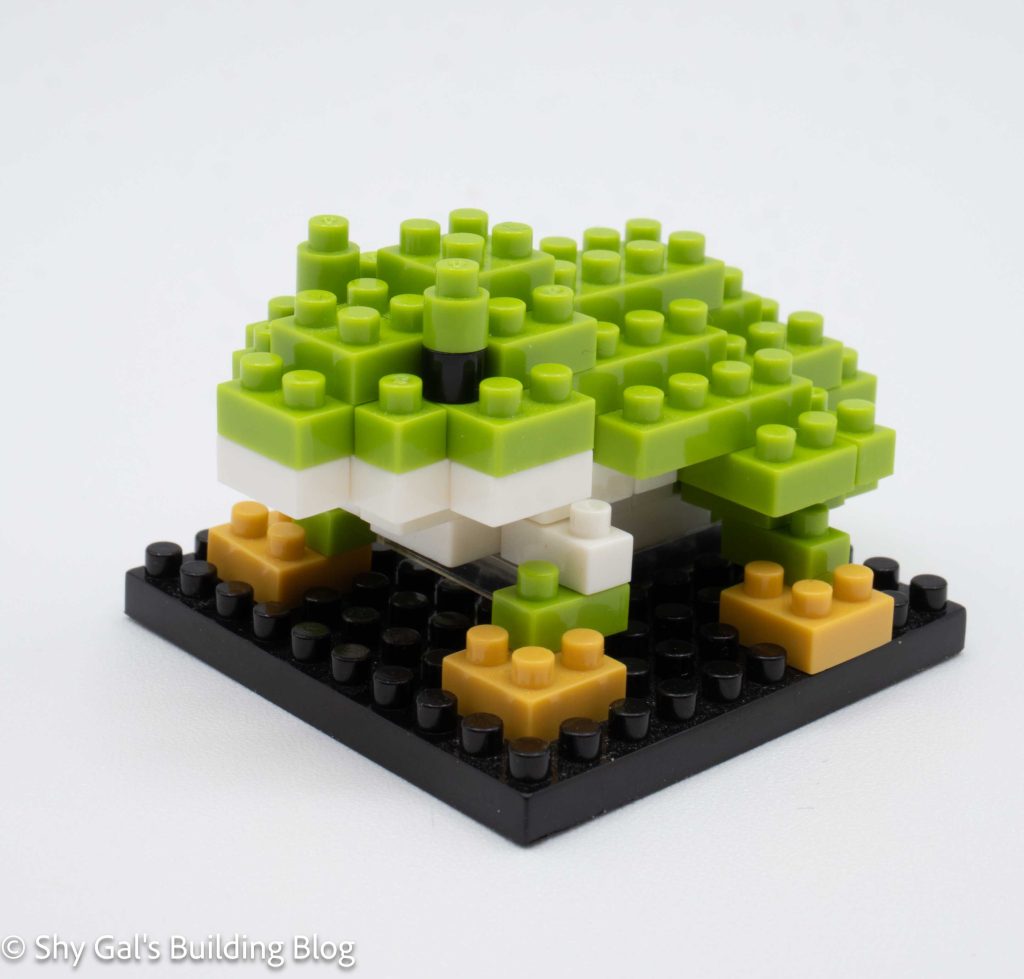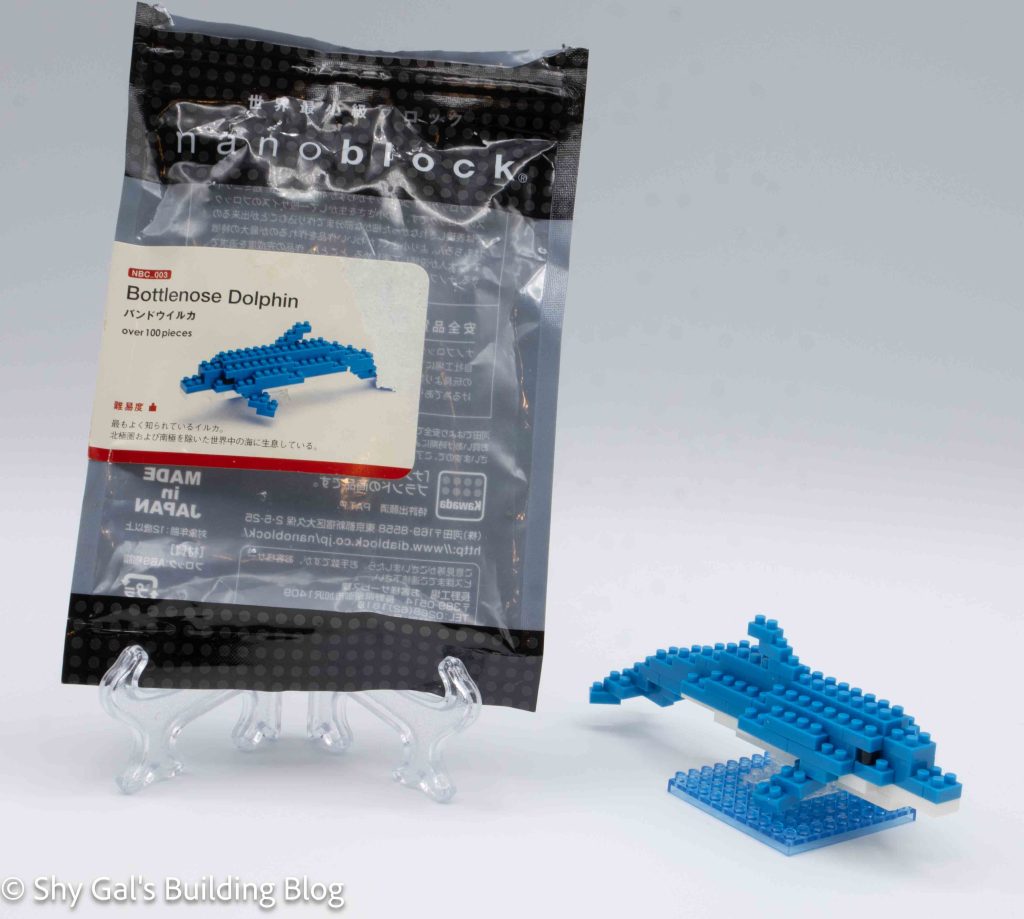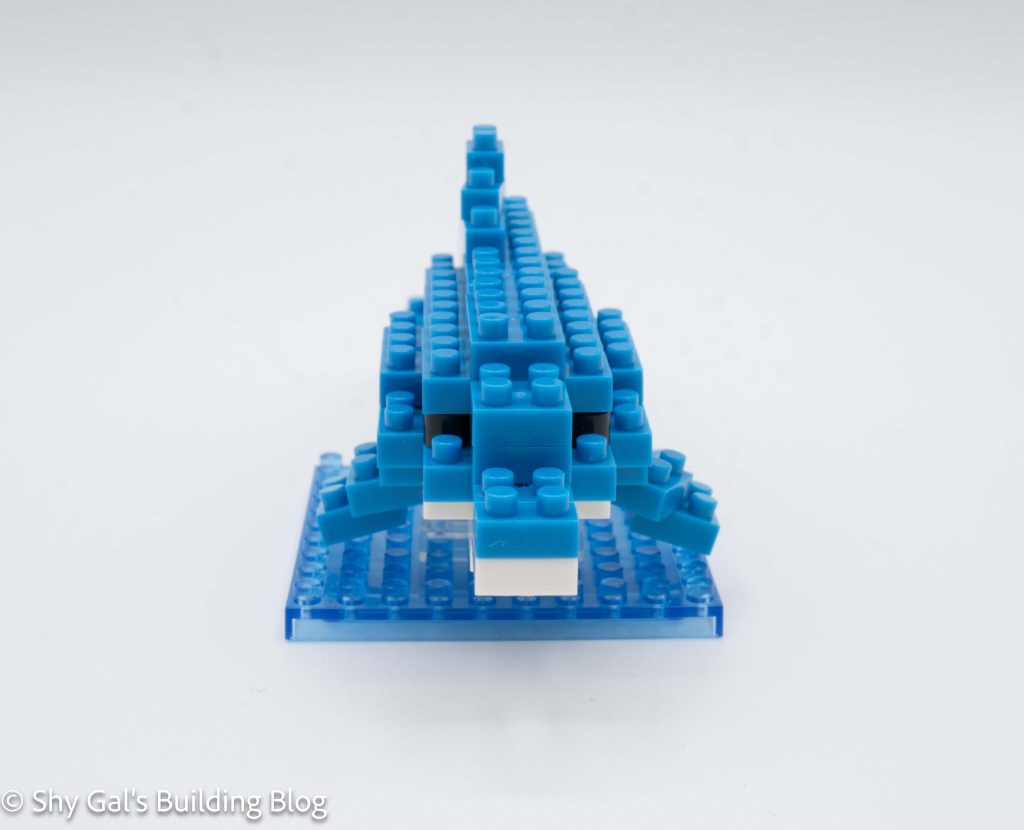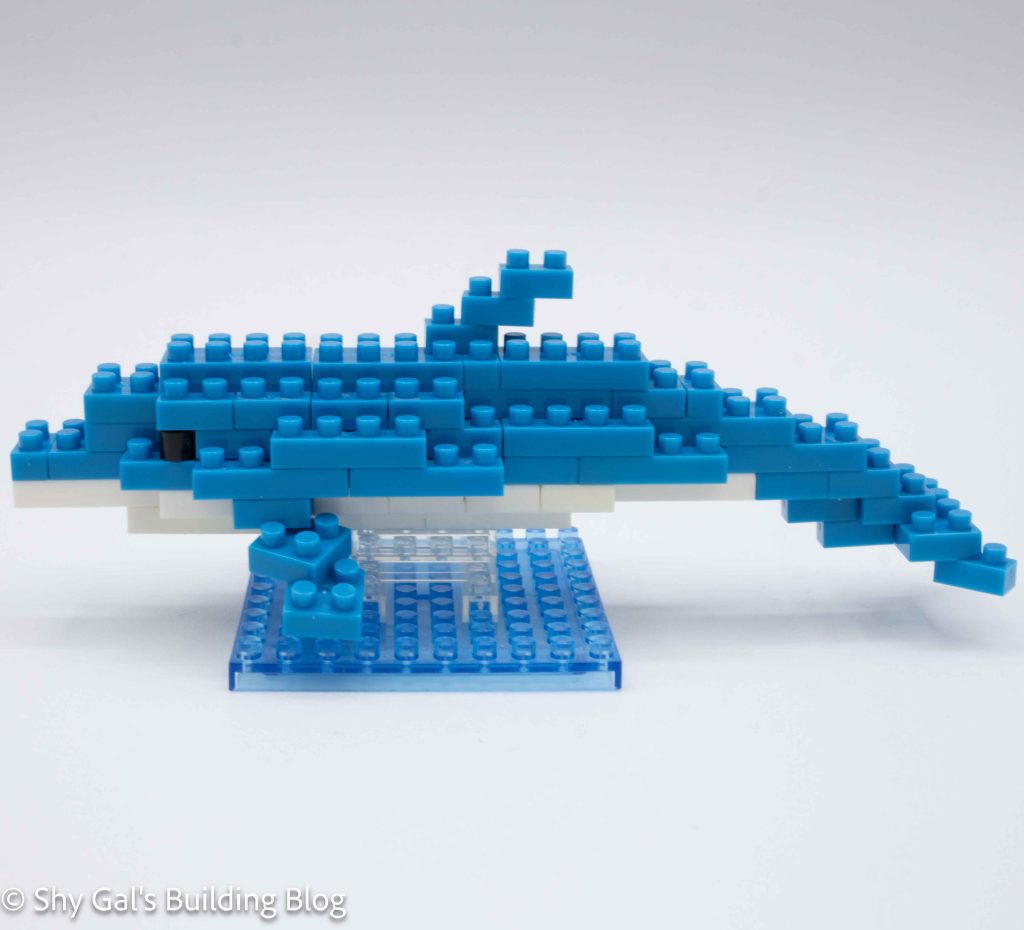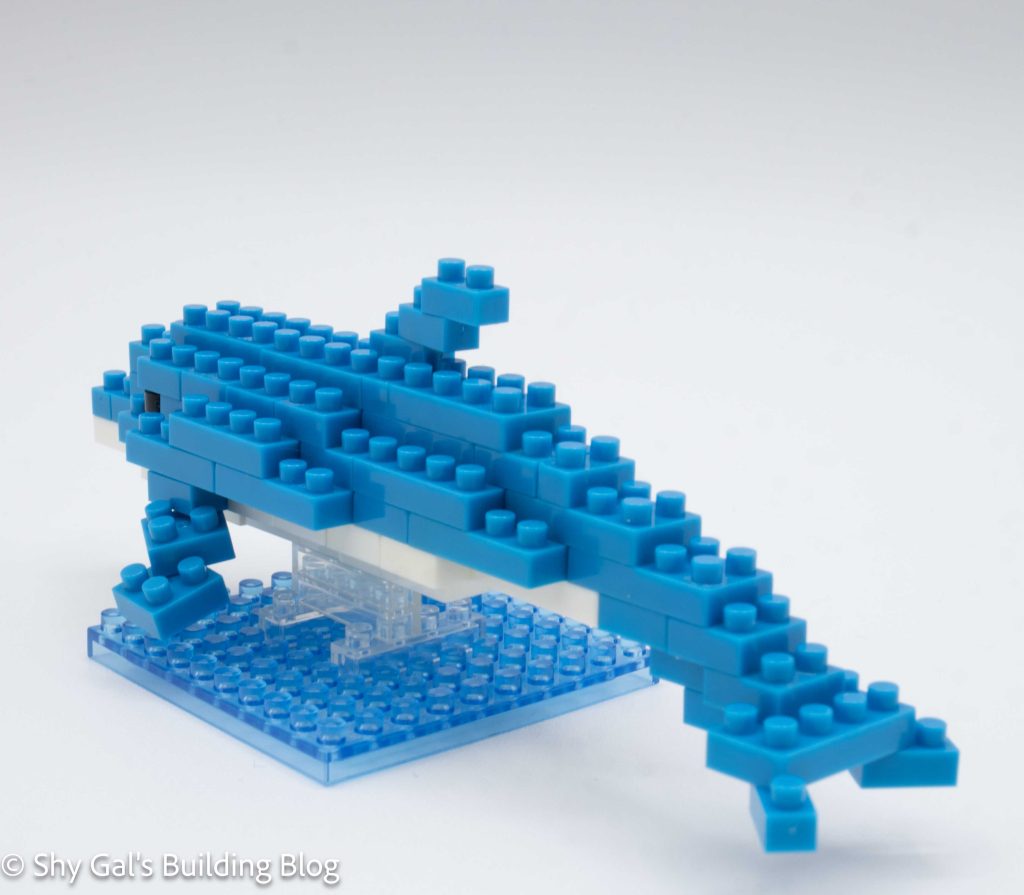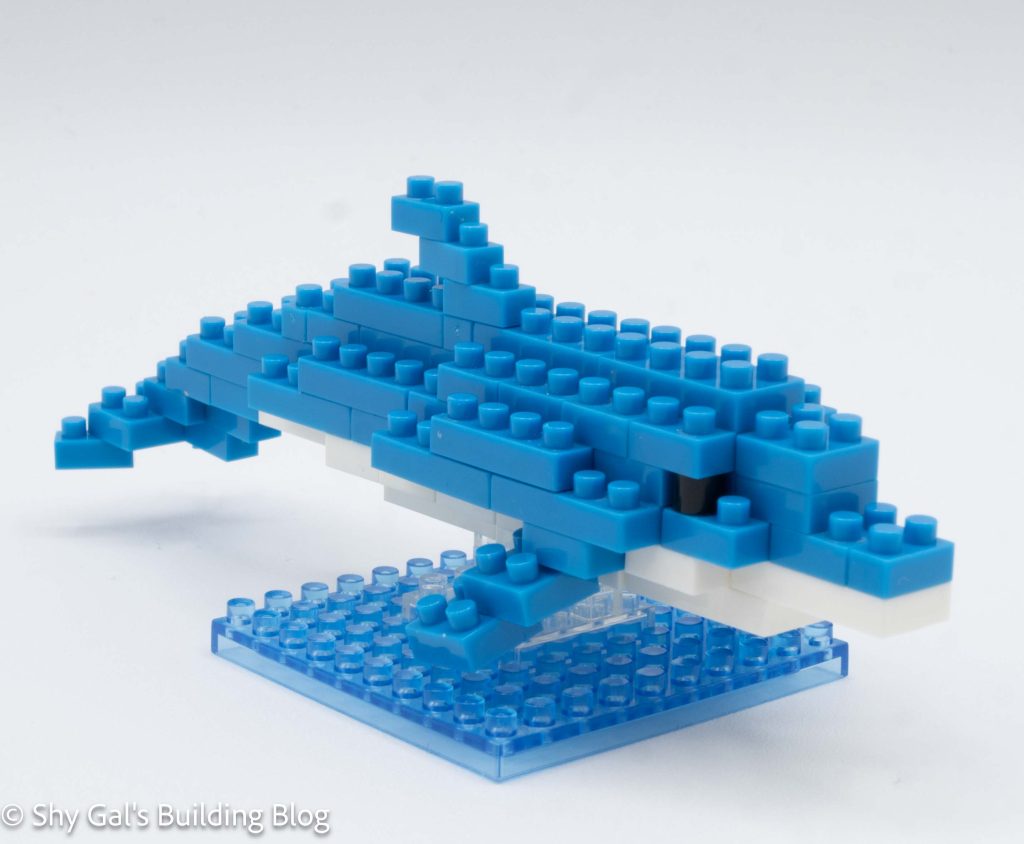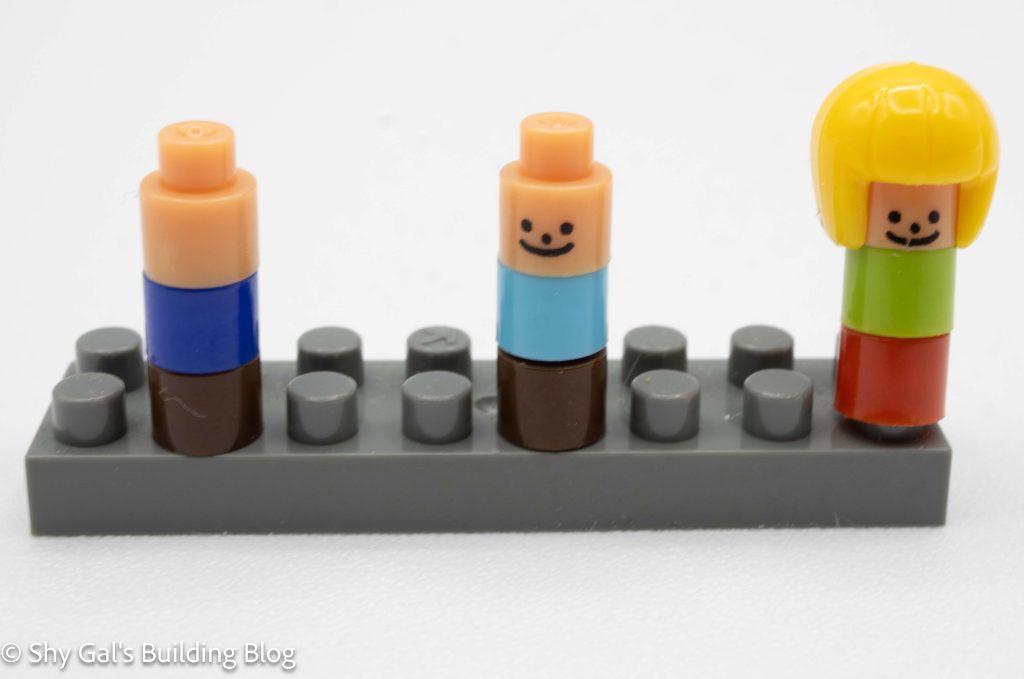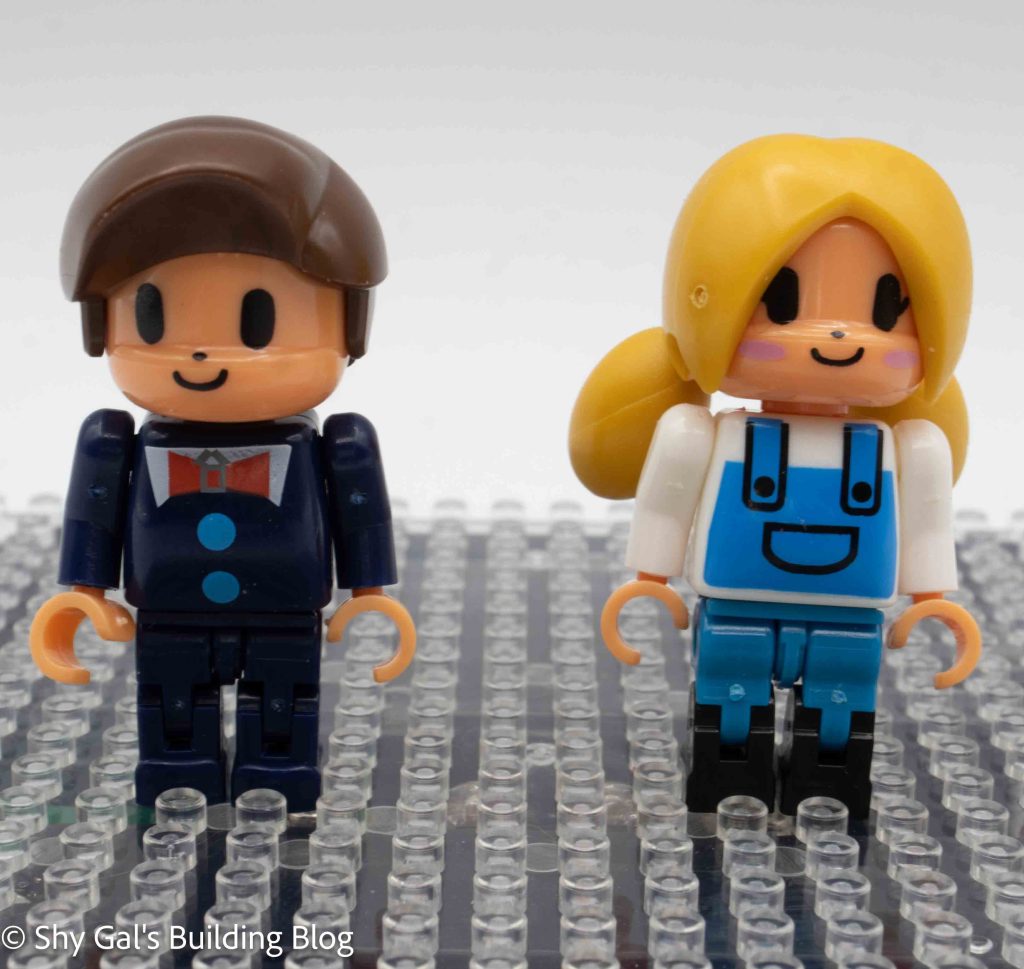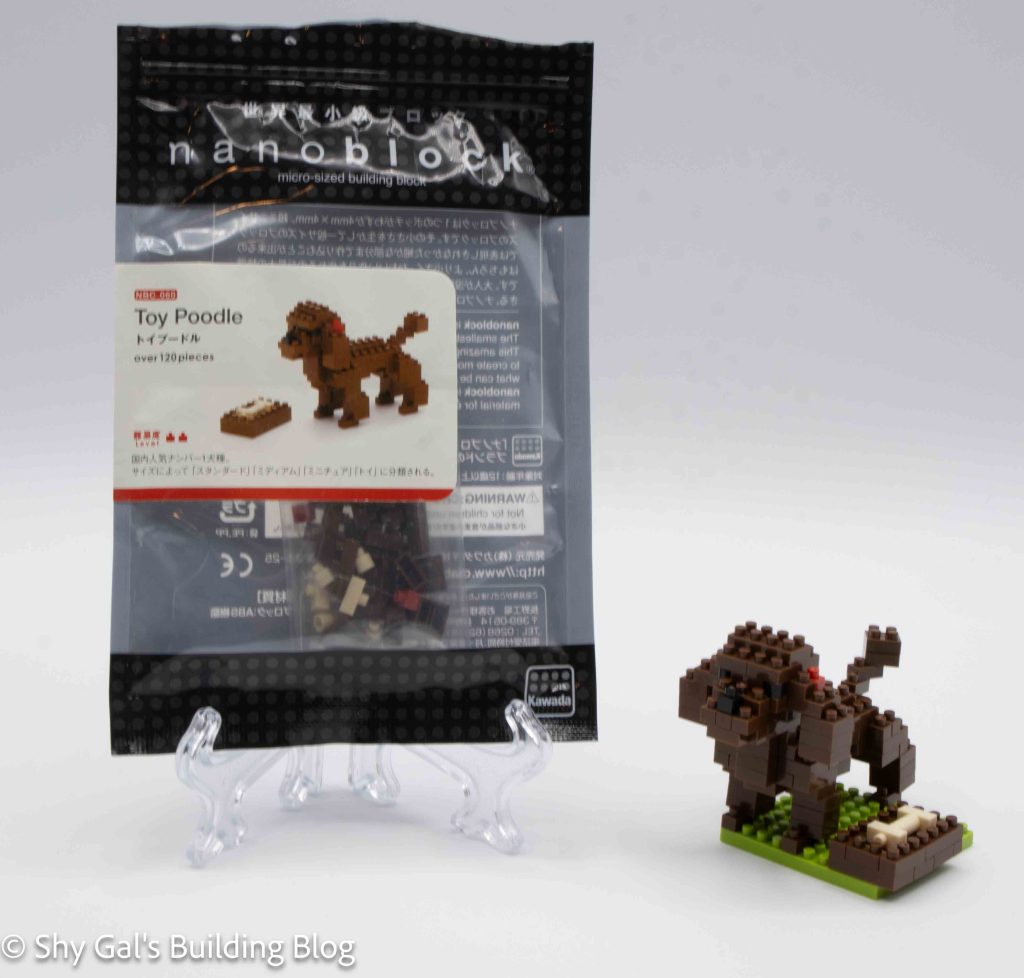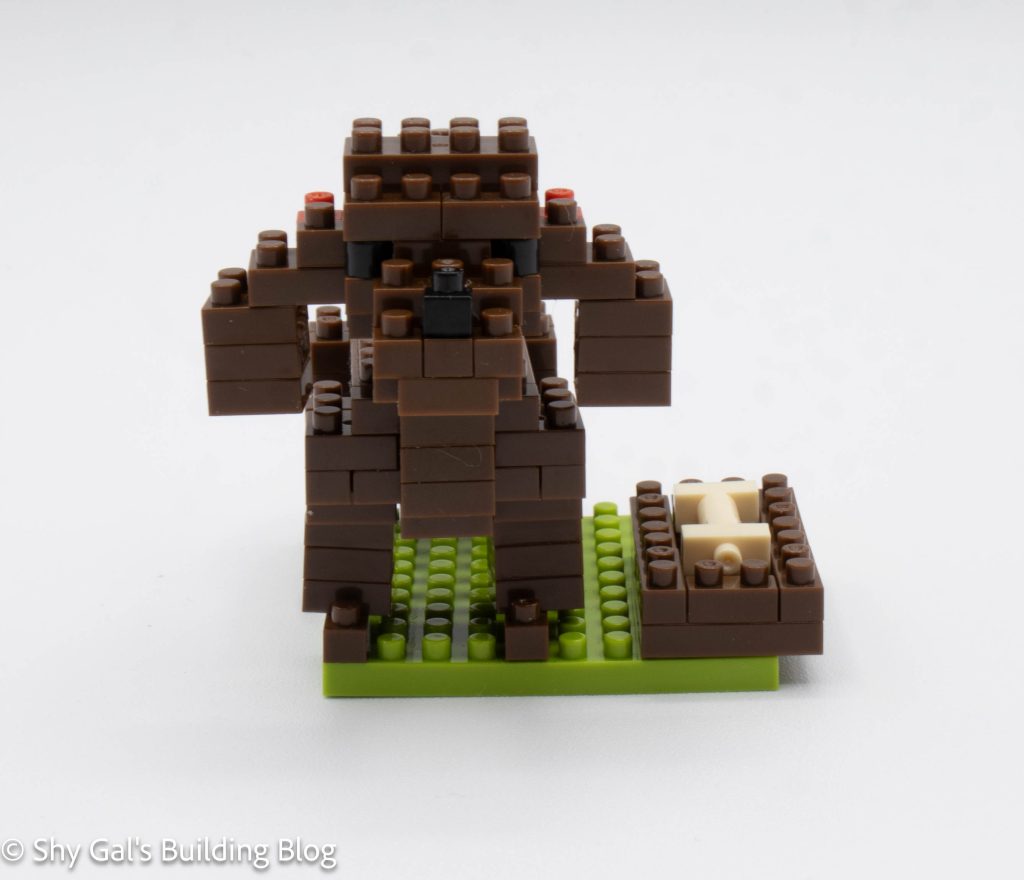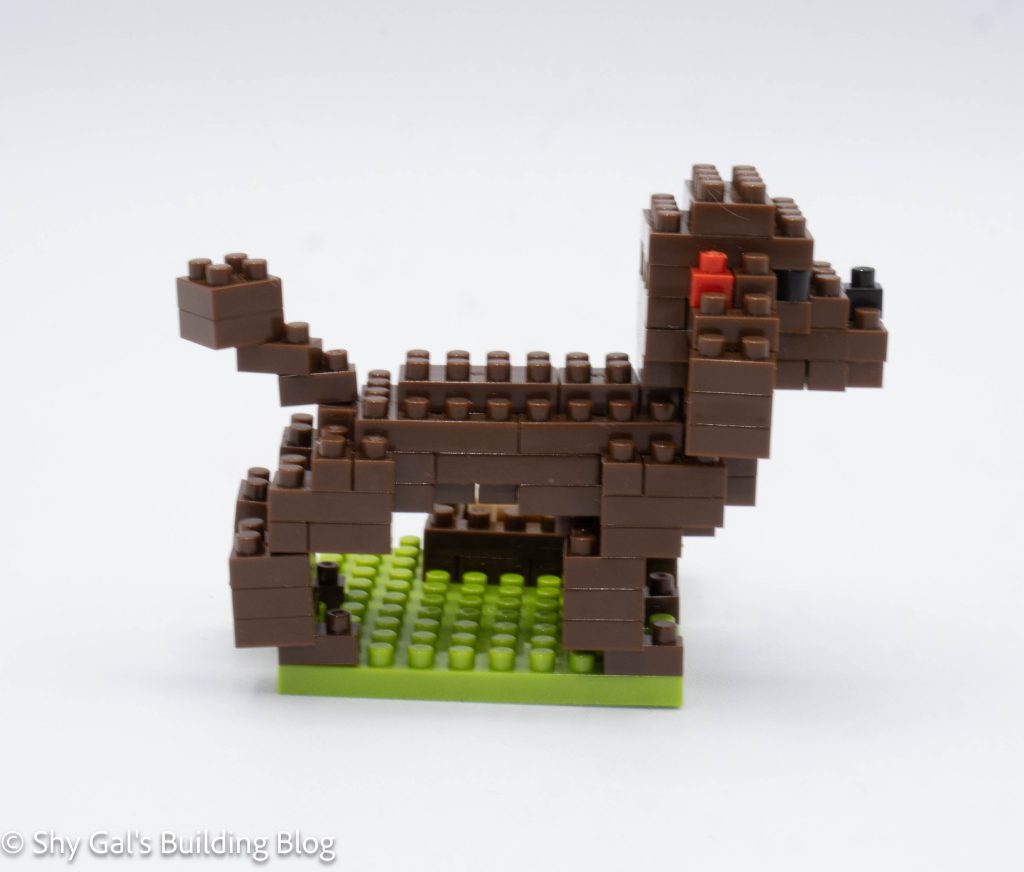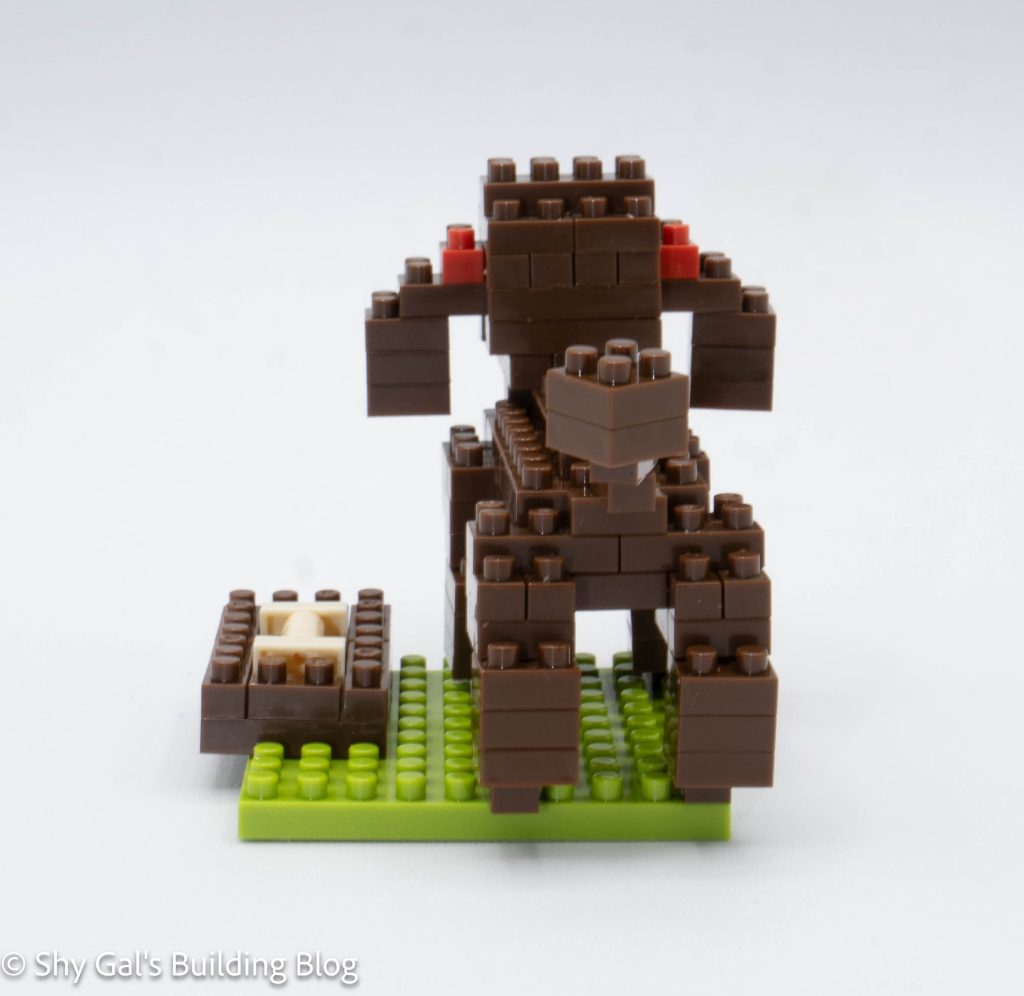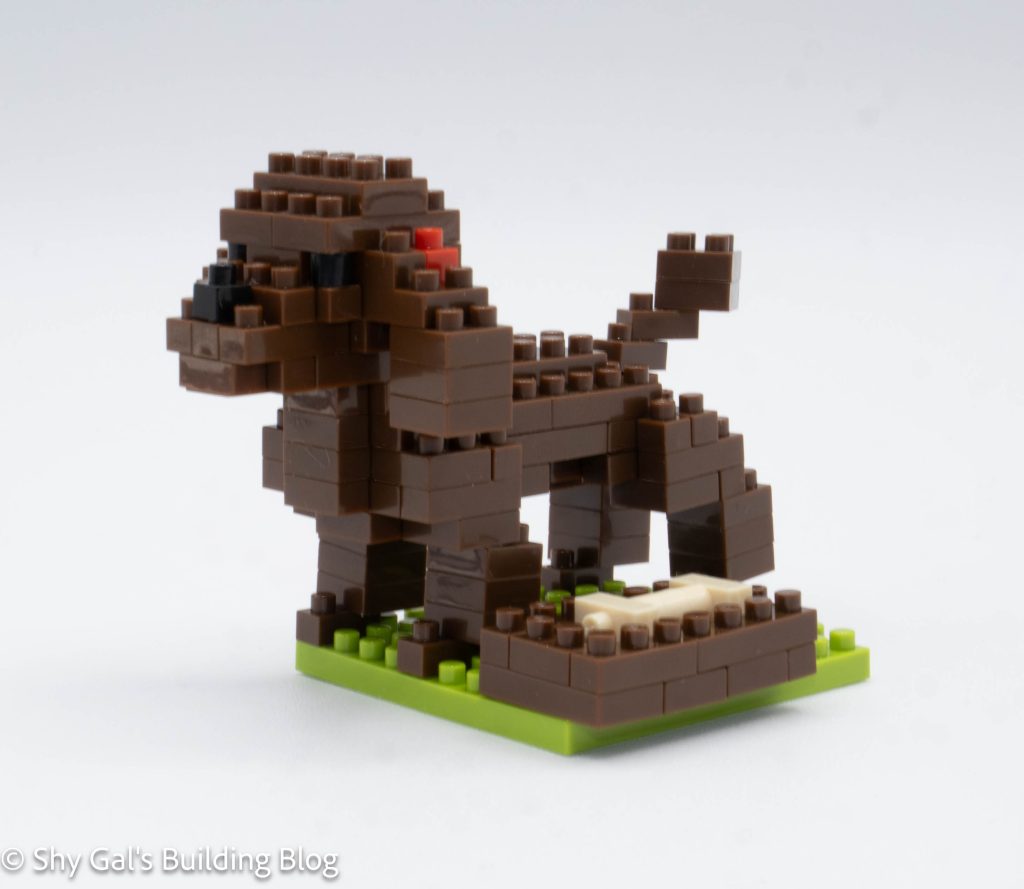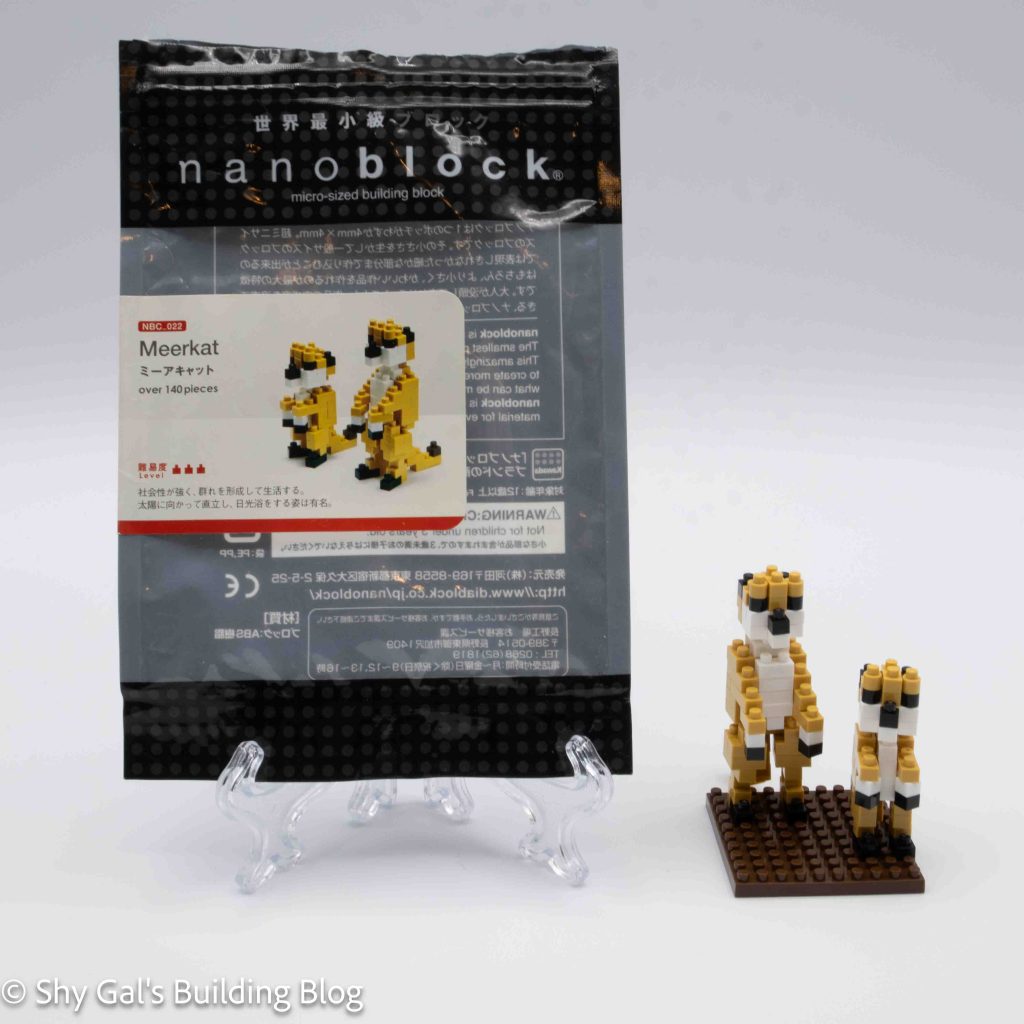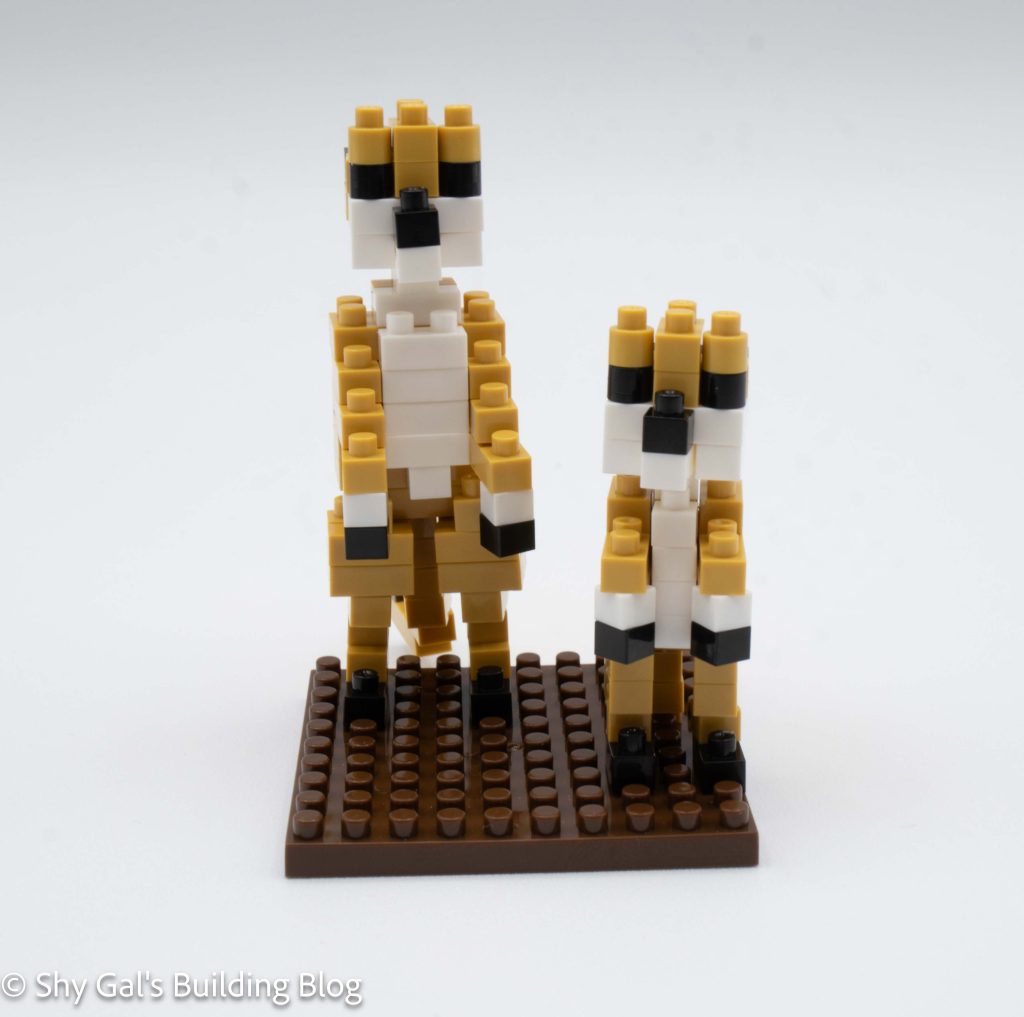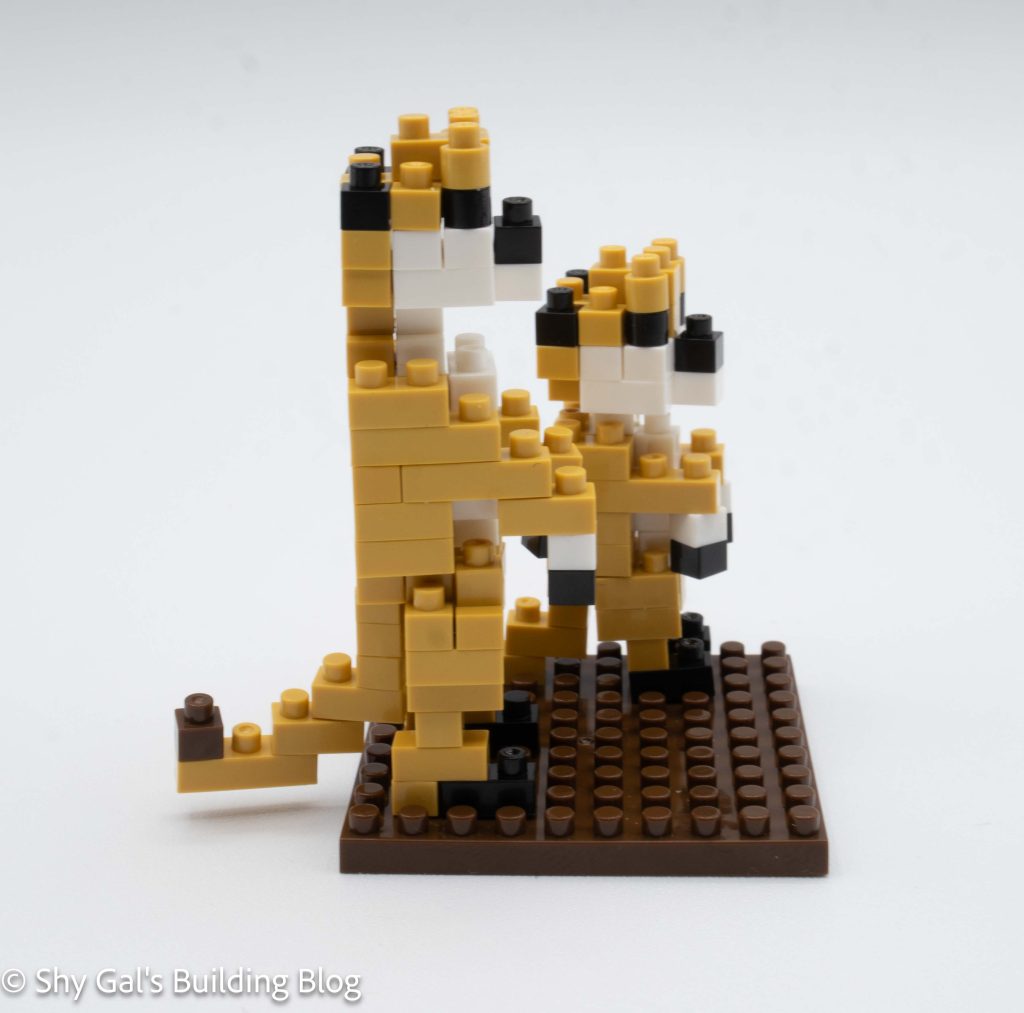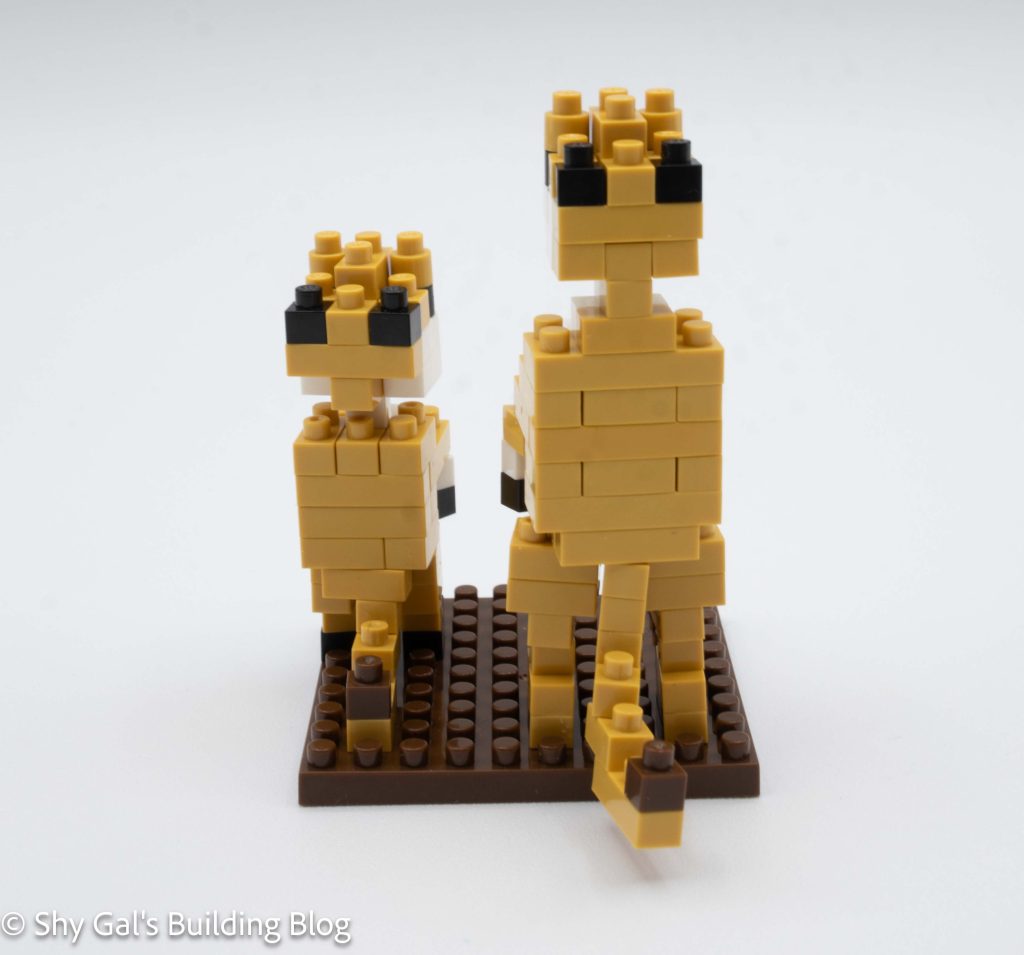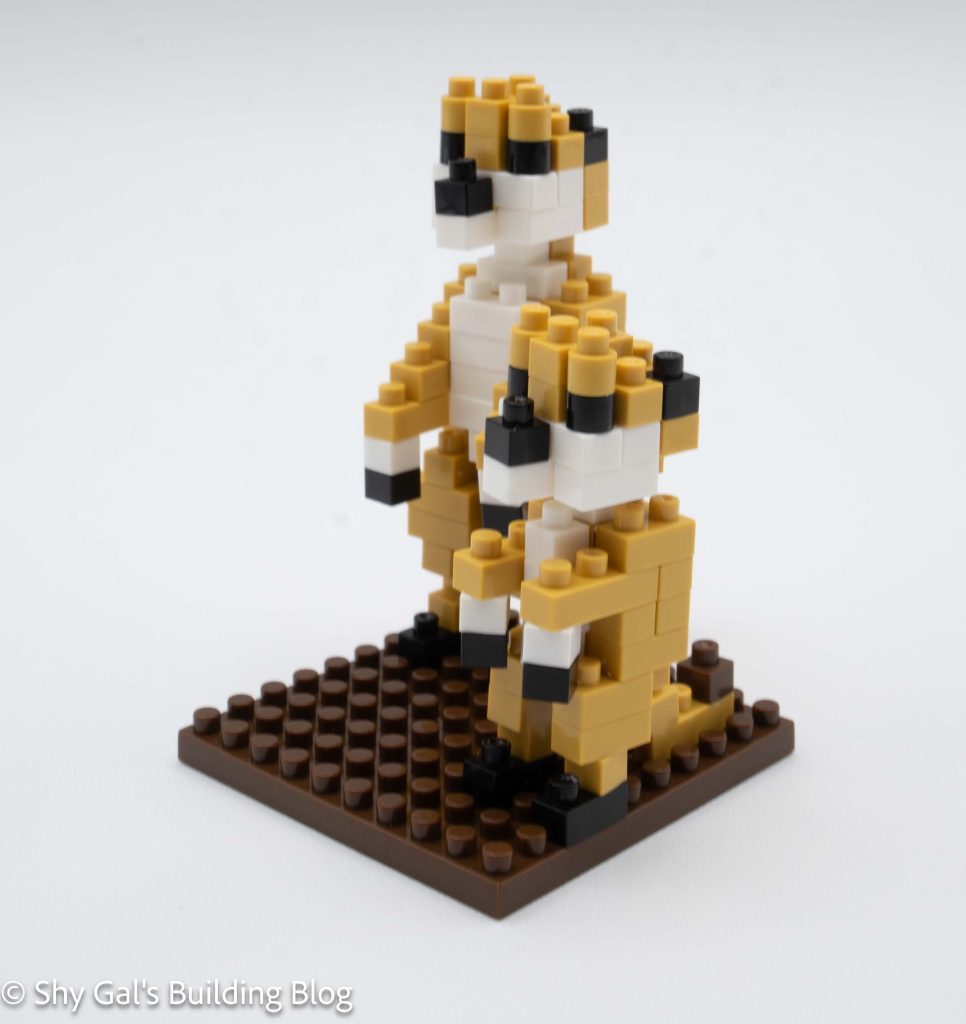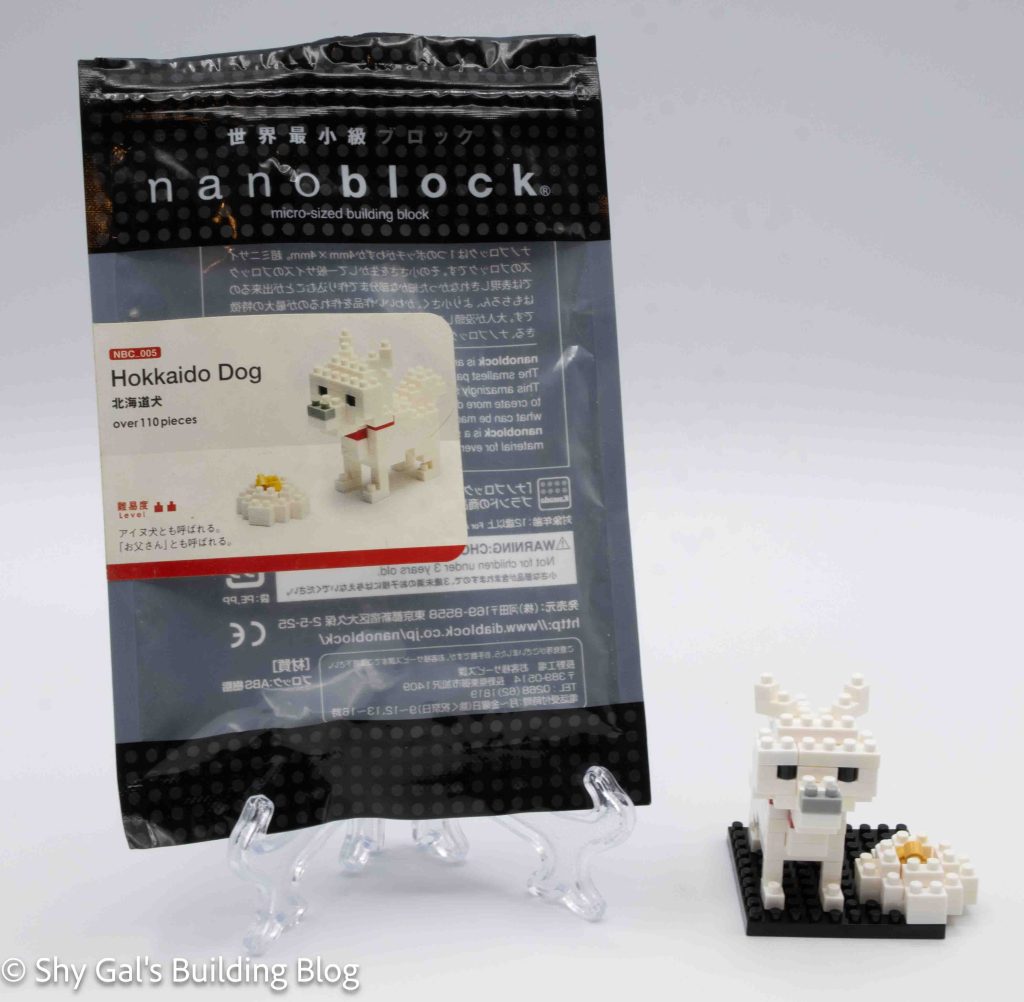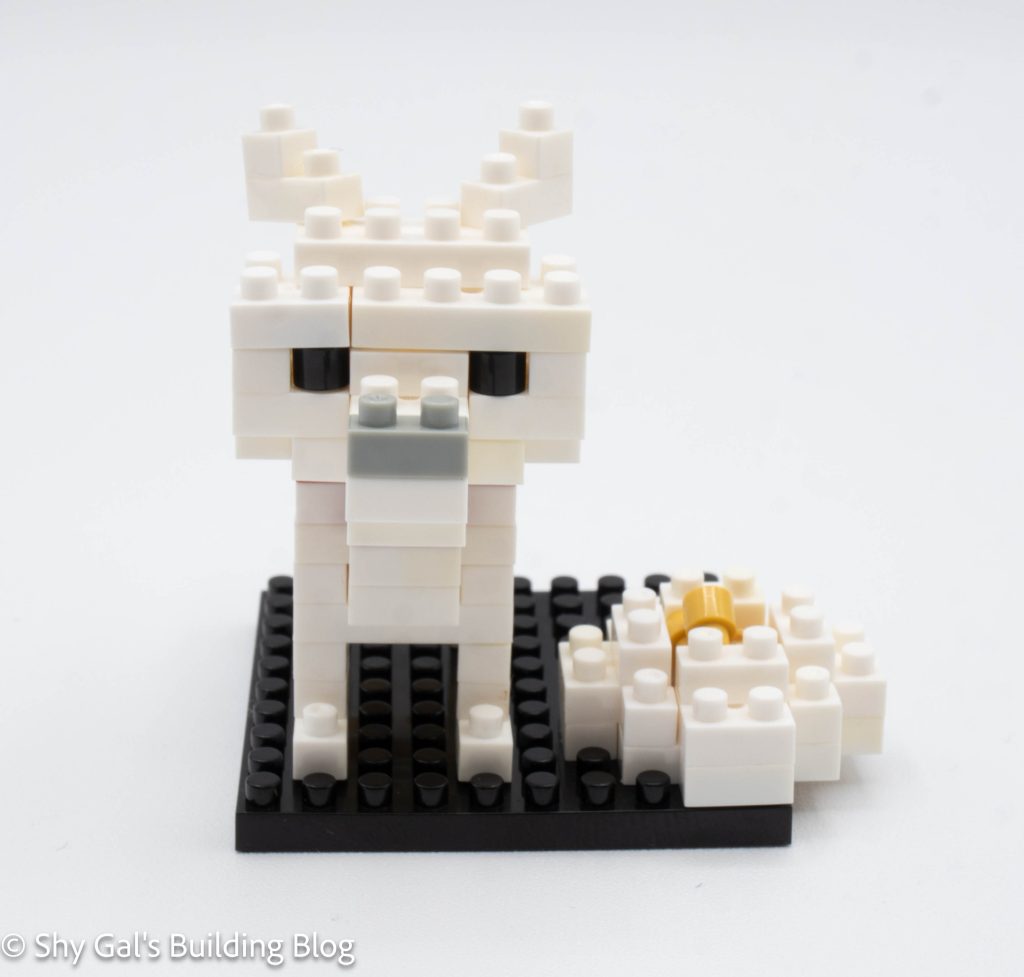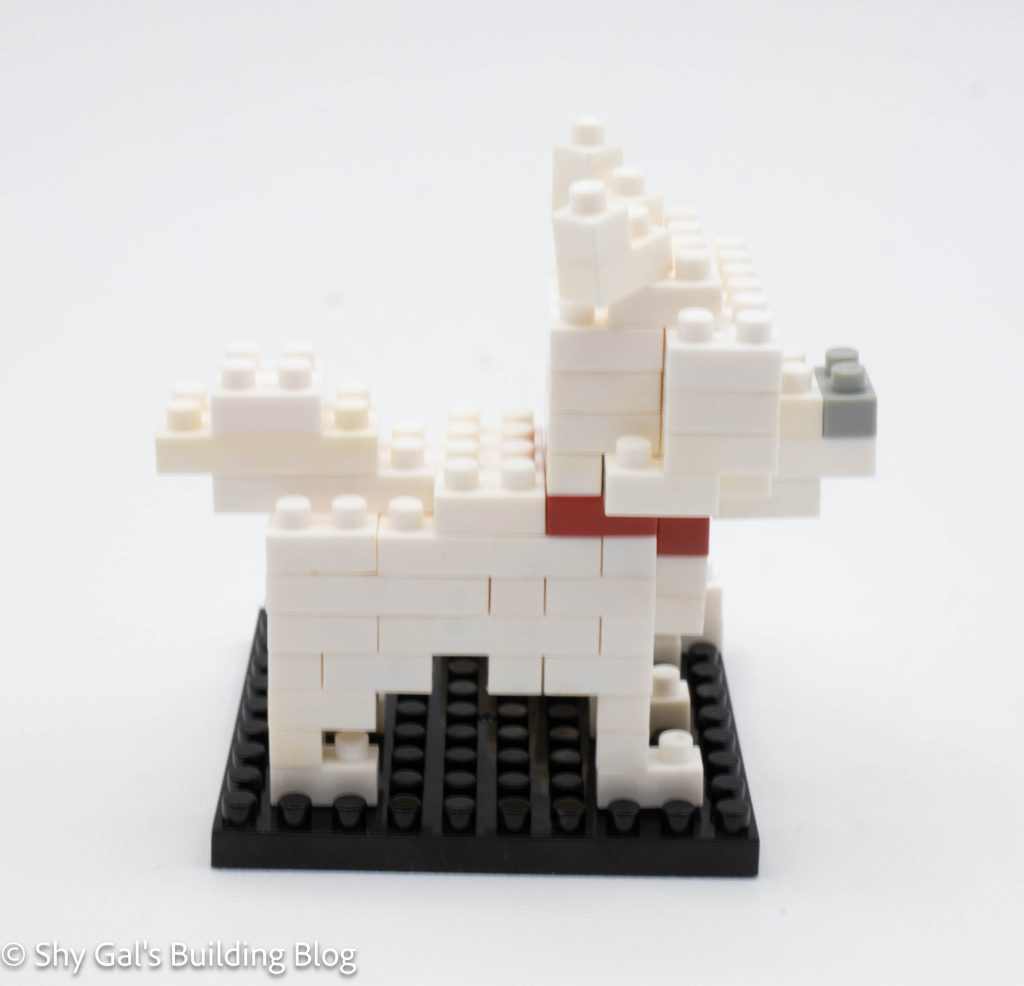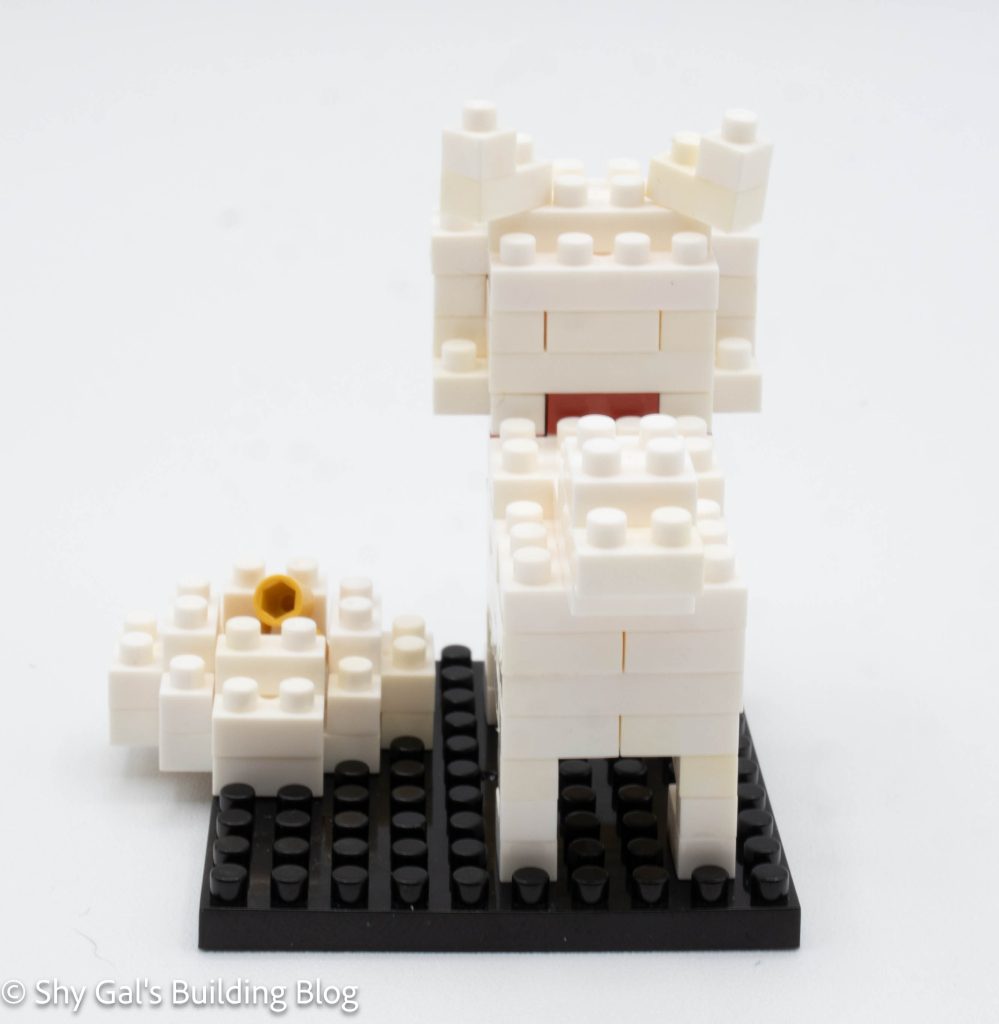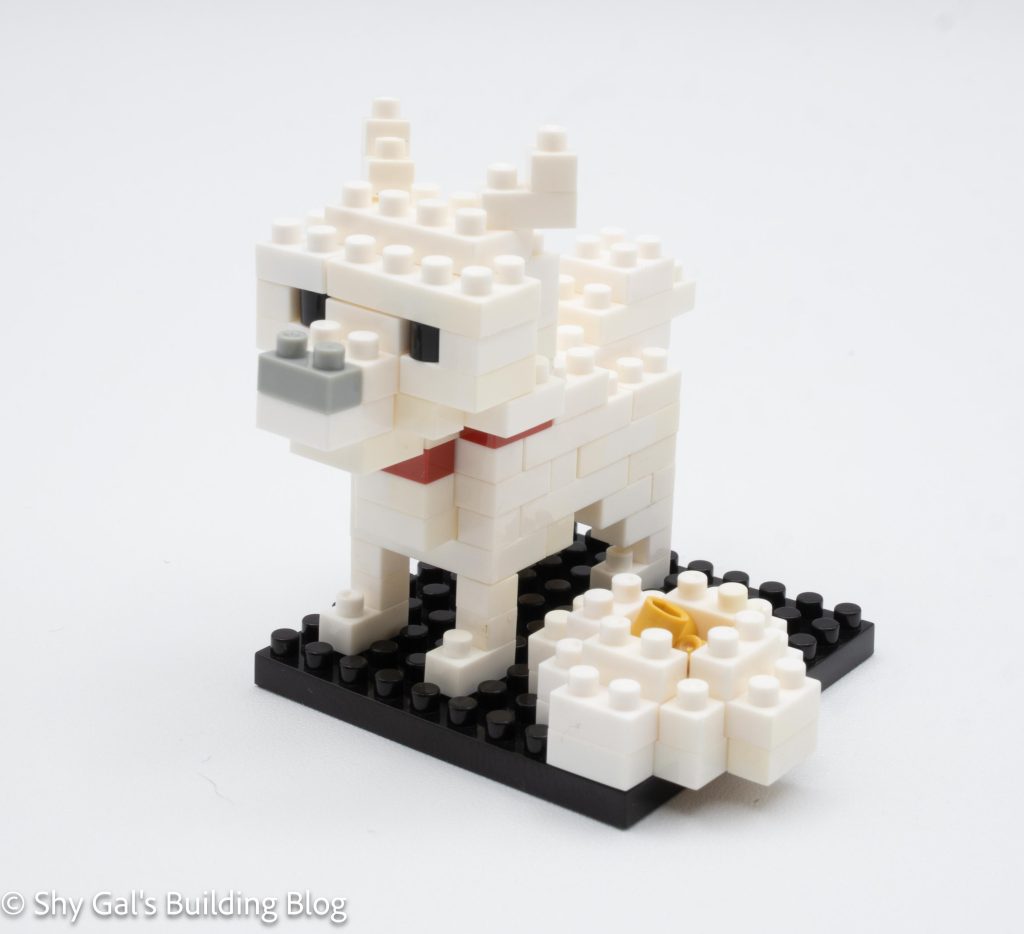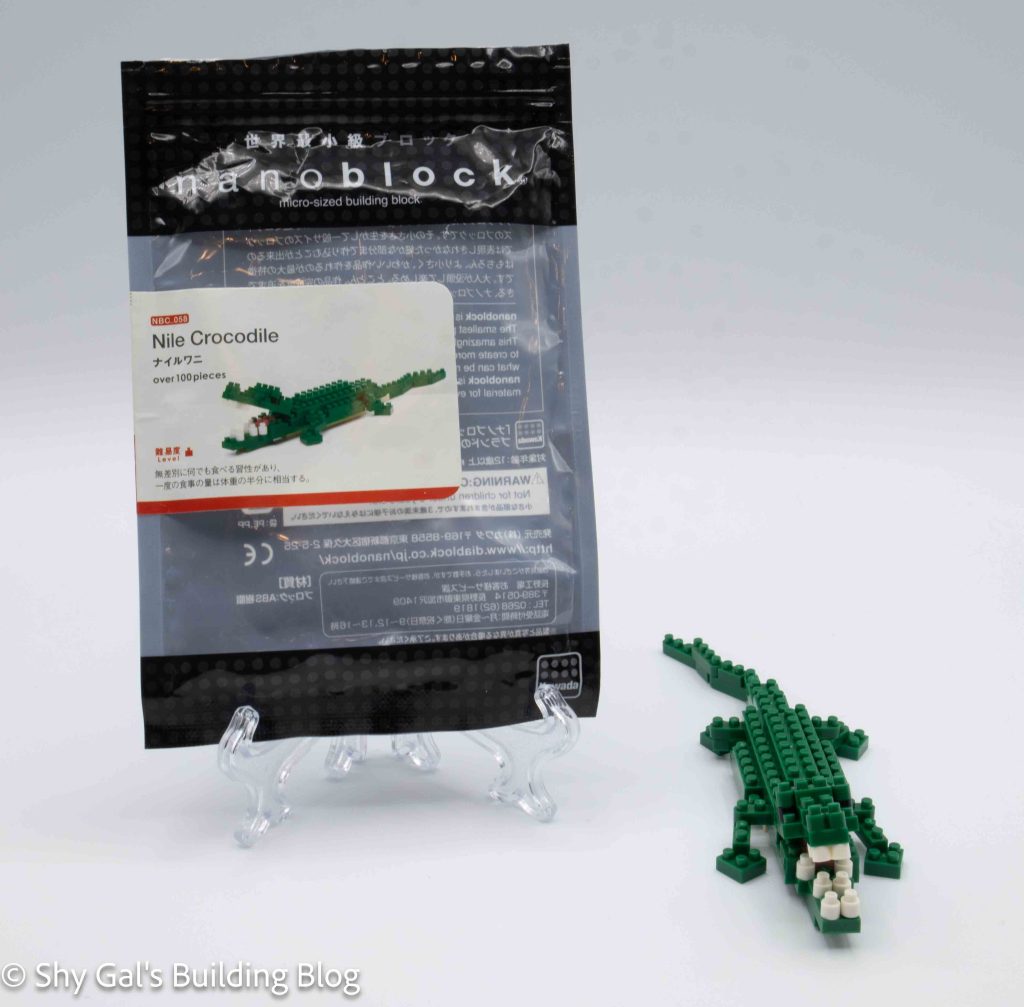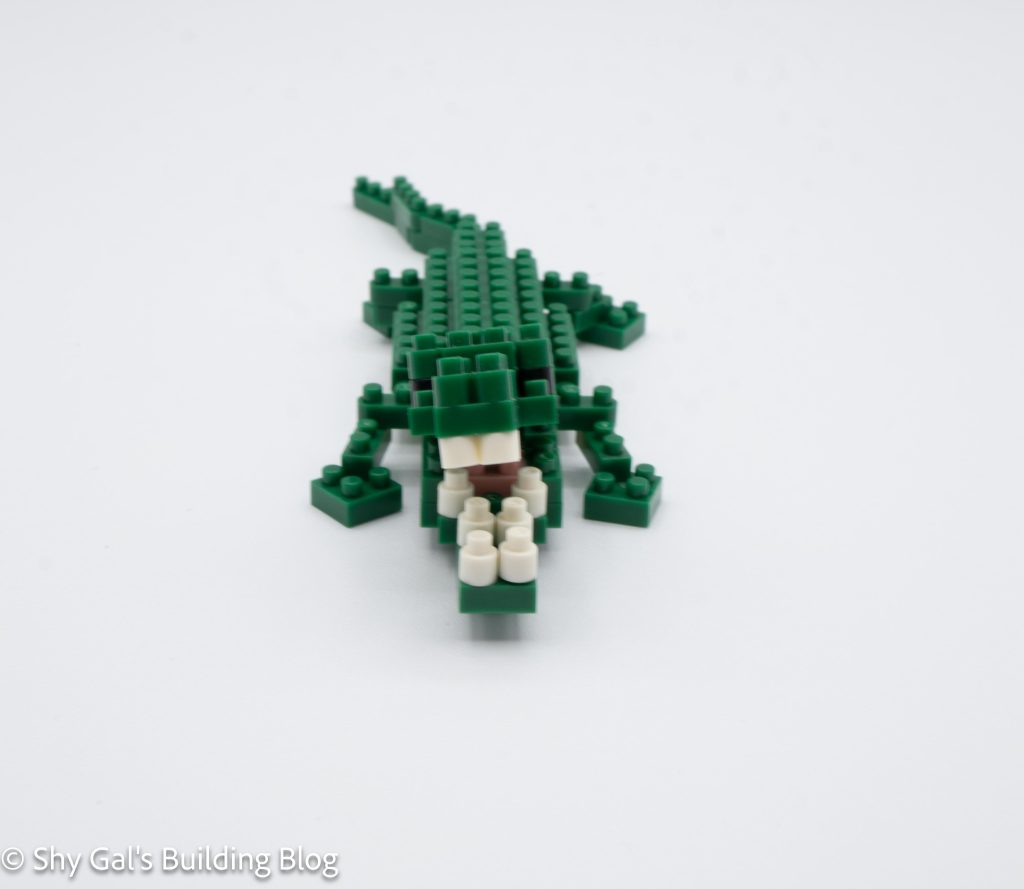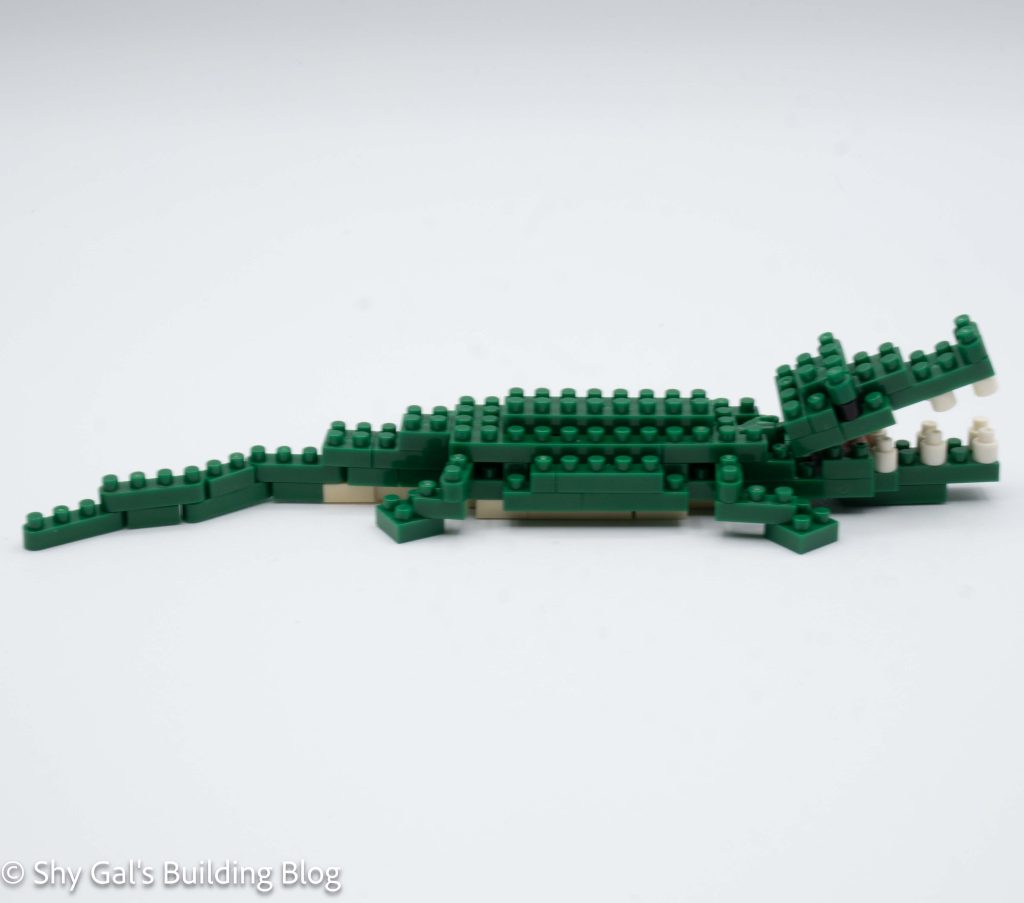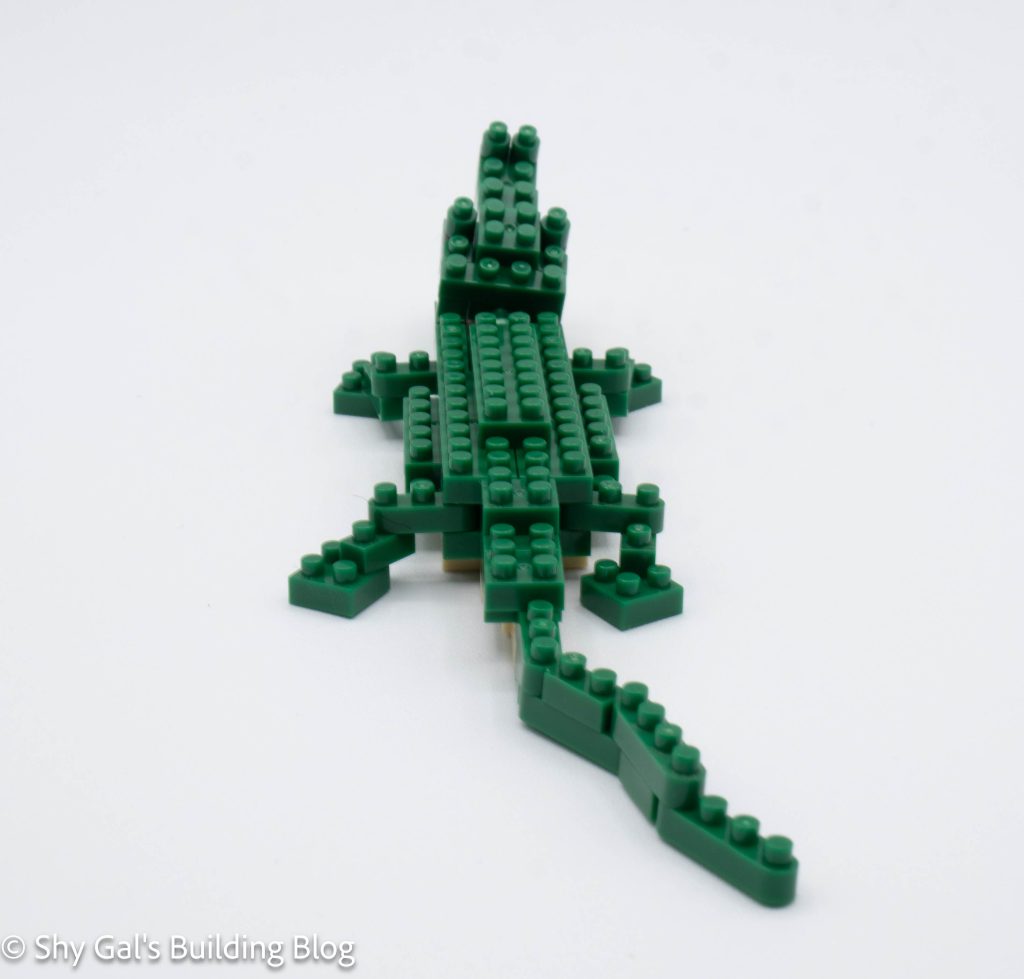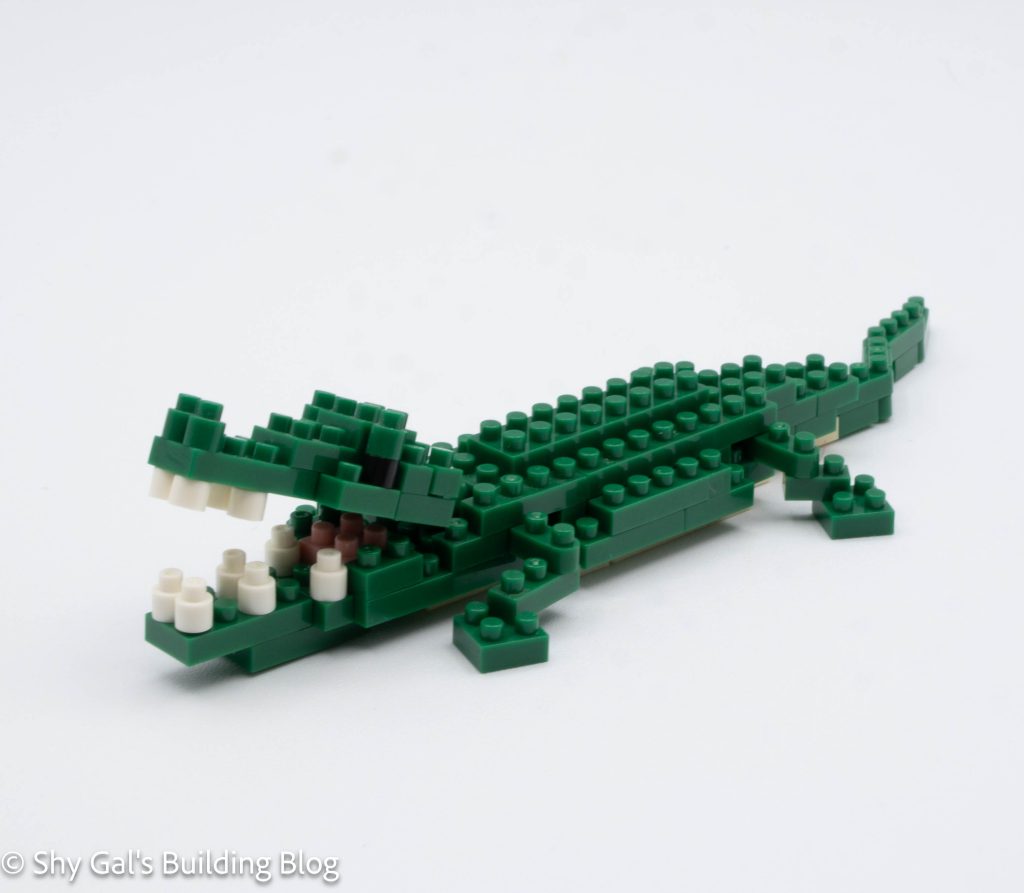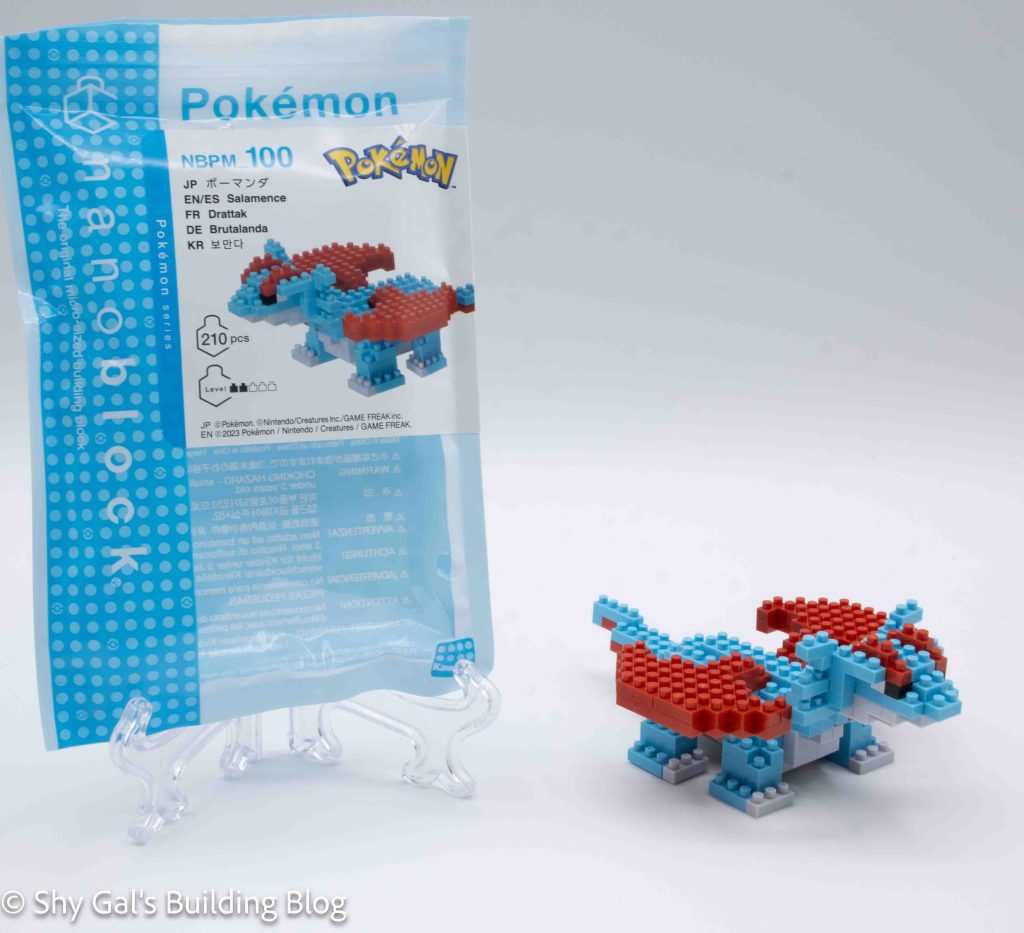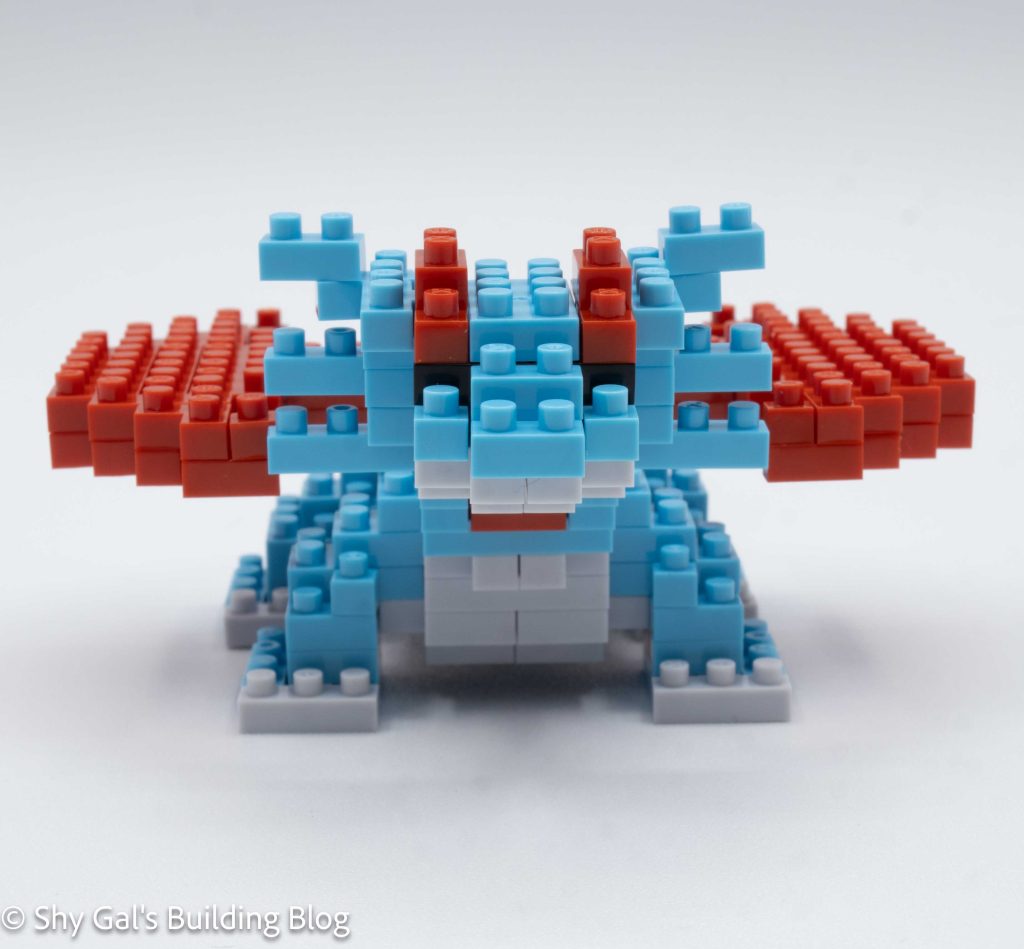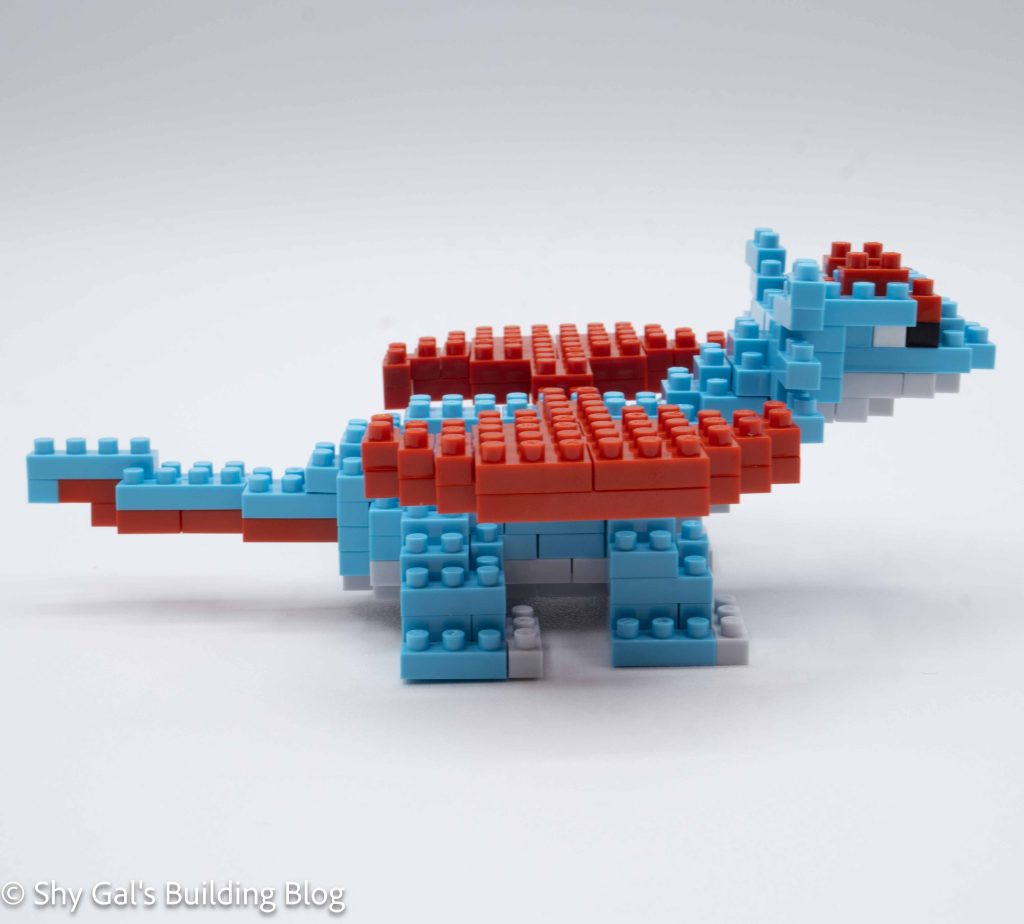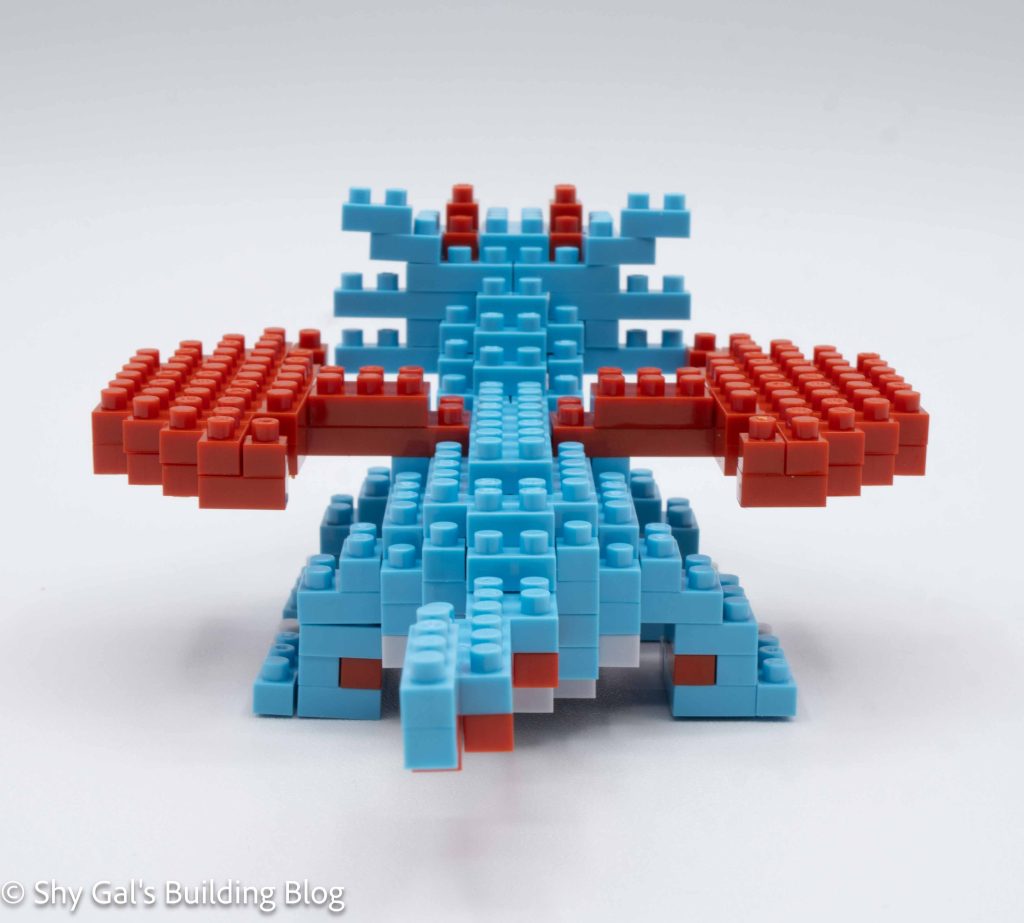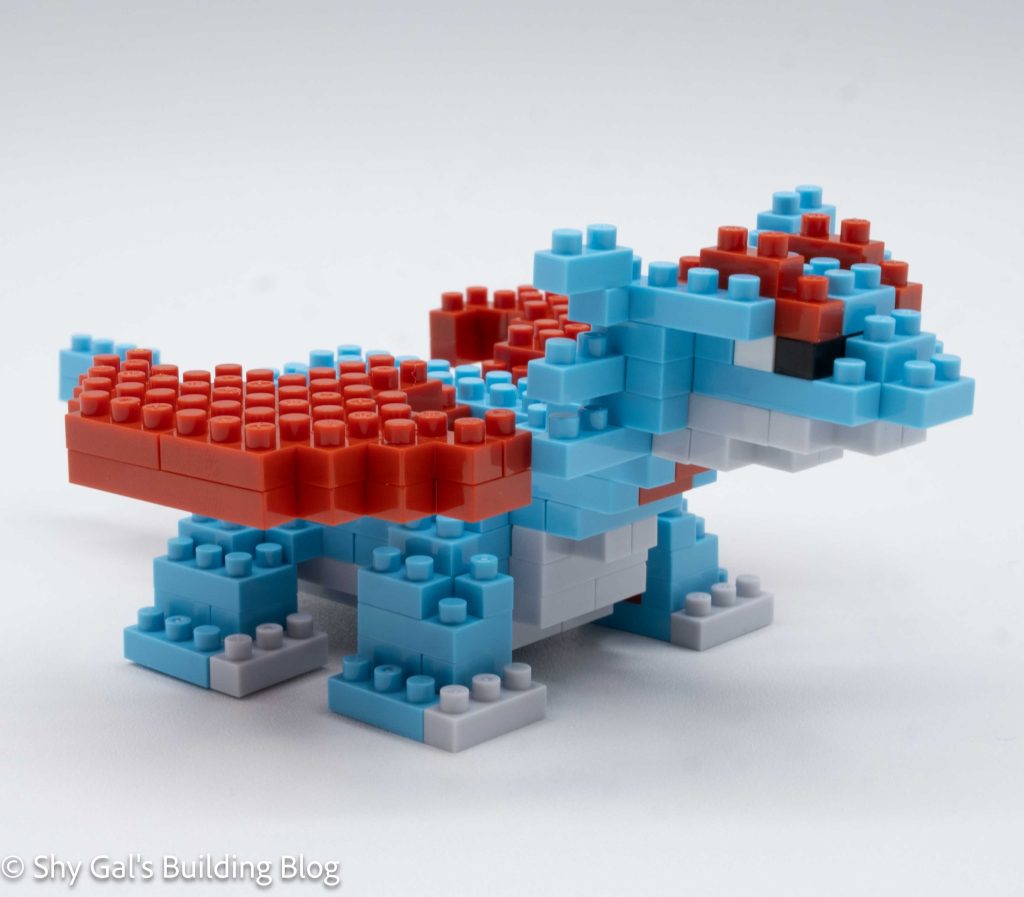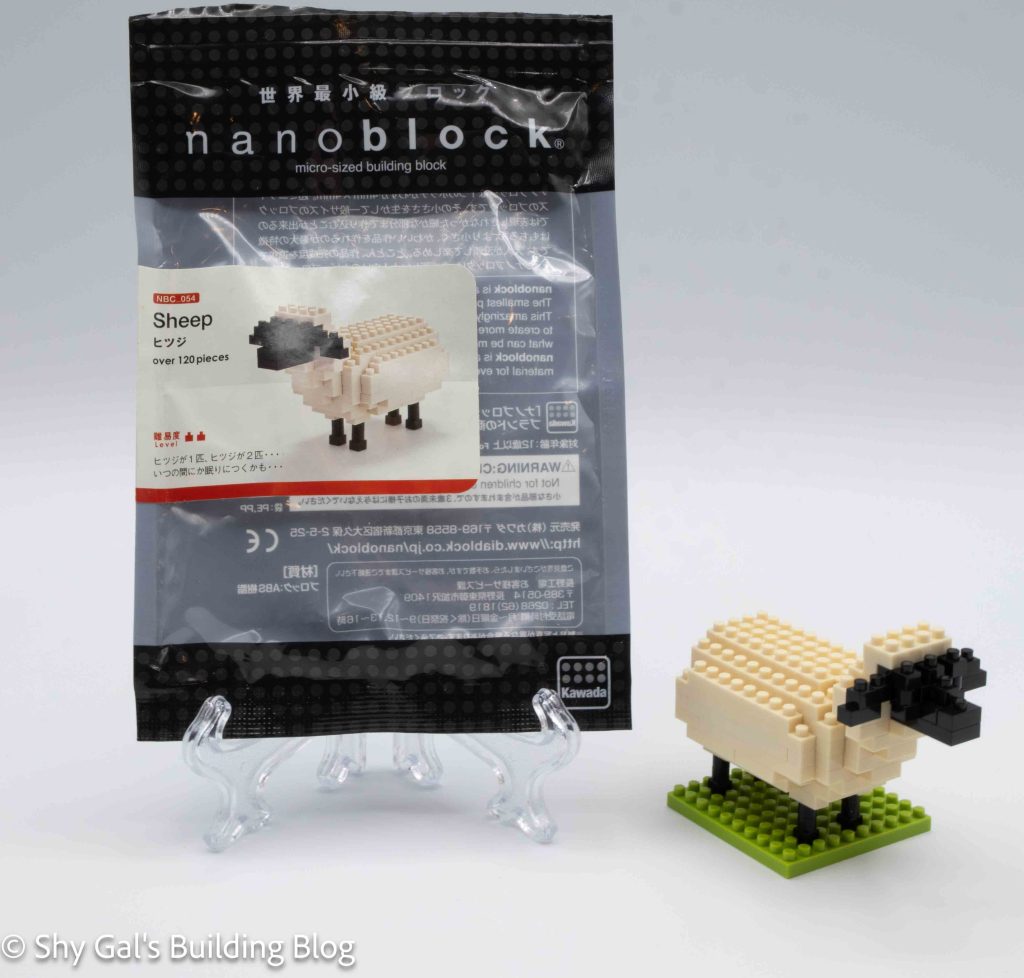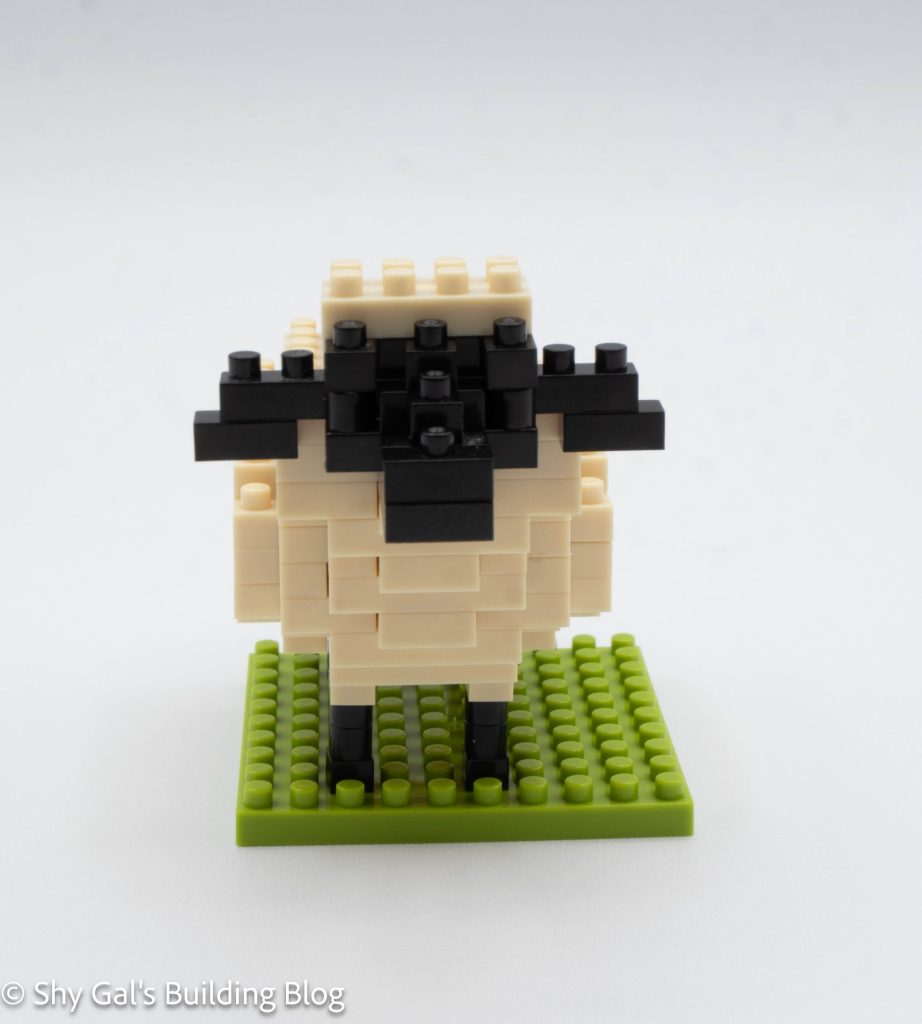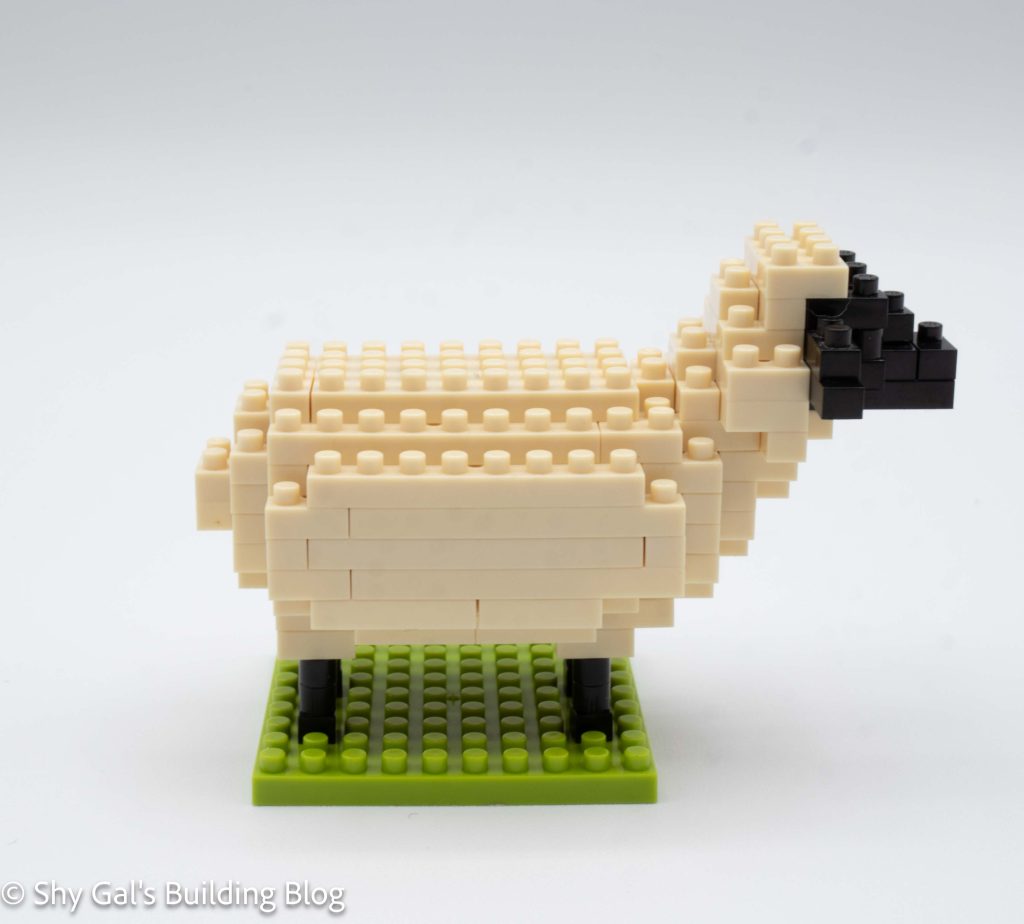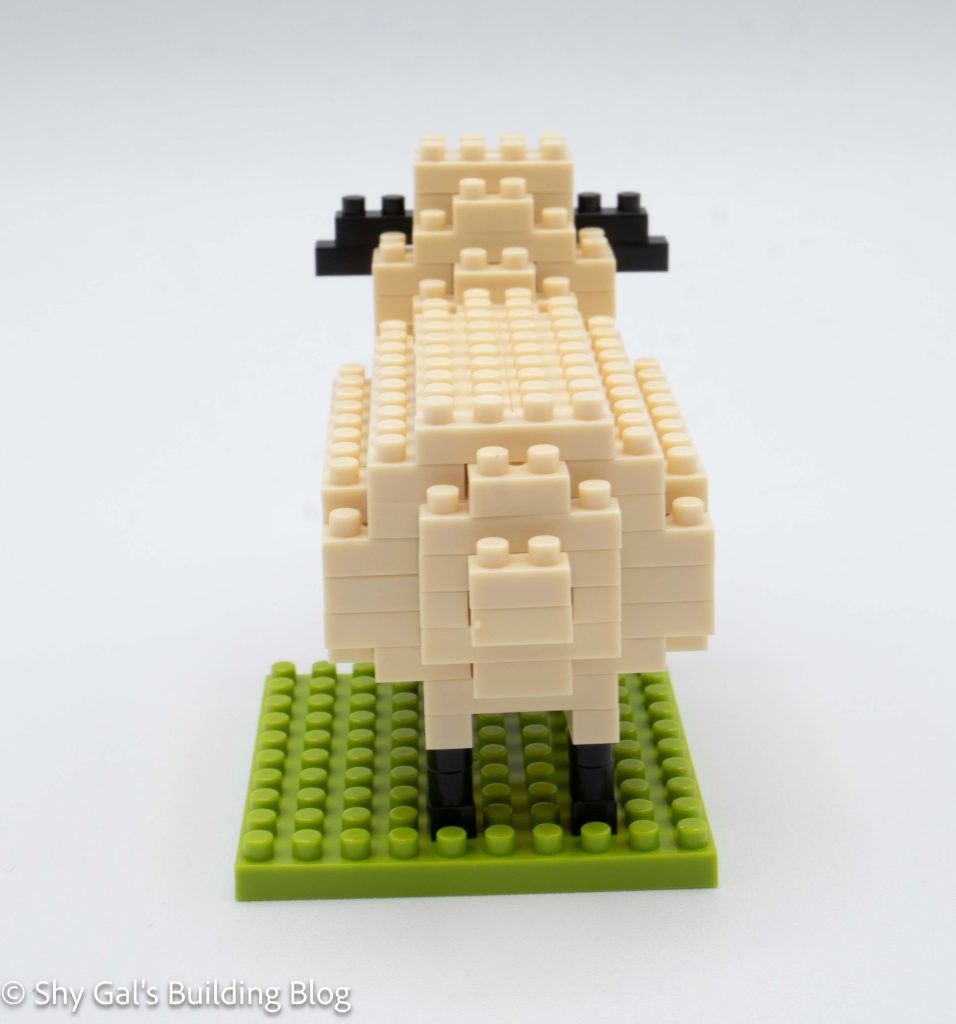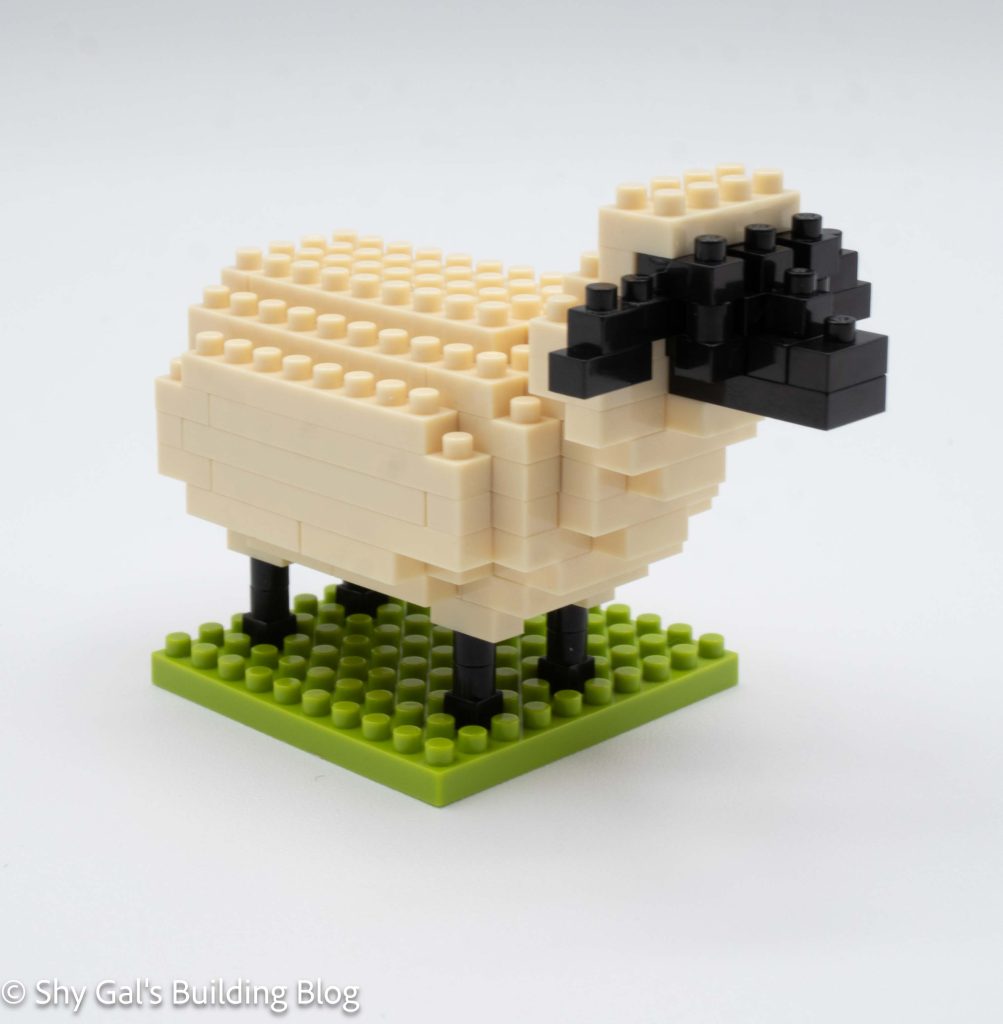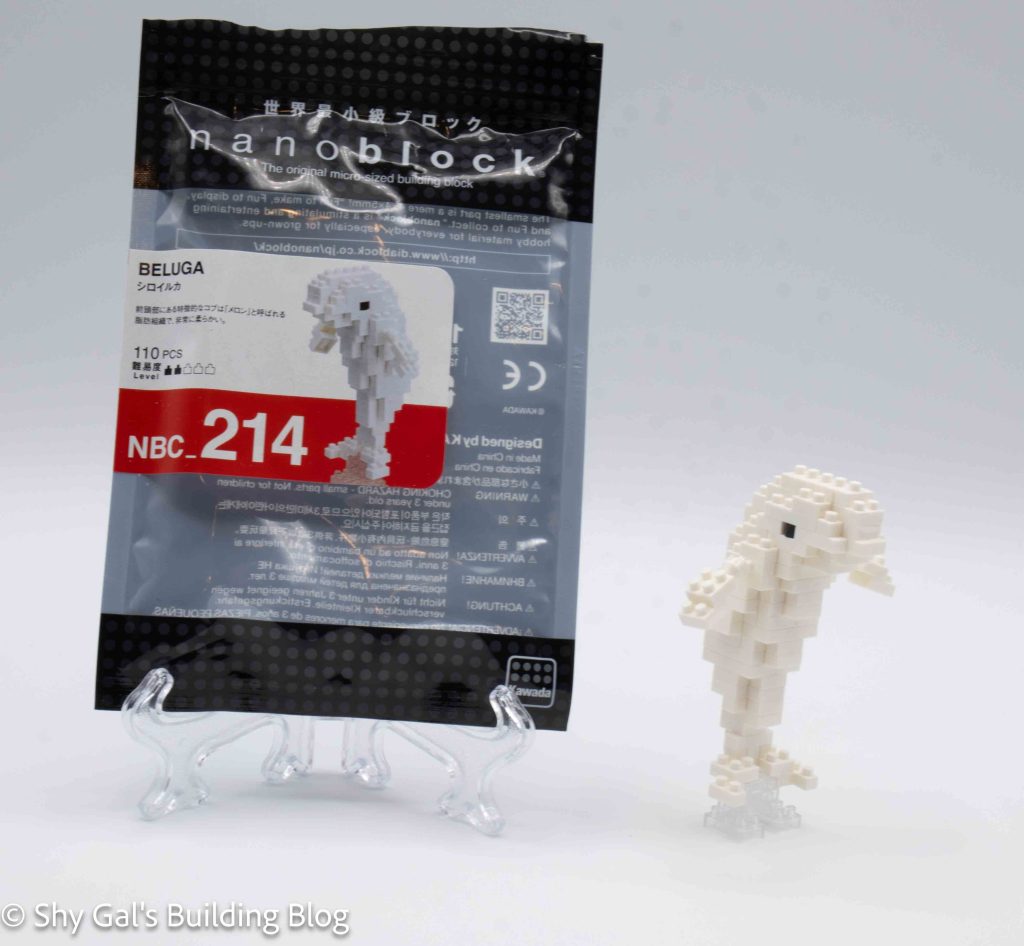
This post is a review of the nanoblock Beluga build. Beluga is part of the nanoblock Mini Collection series. Wondering what else is part of the Mini Collection? Click here for a list.
Number: NBC_214
Number of Pieces: 110
Difficulty Rating: 2/5
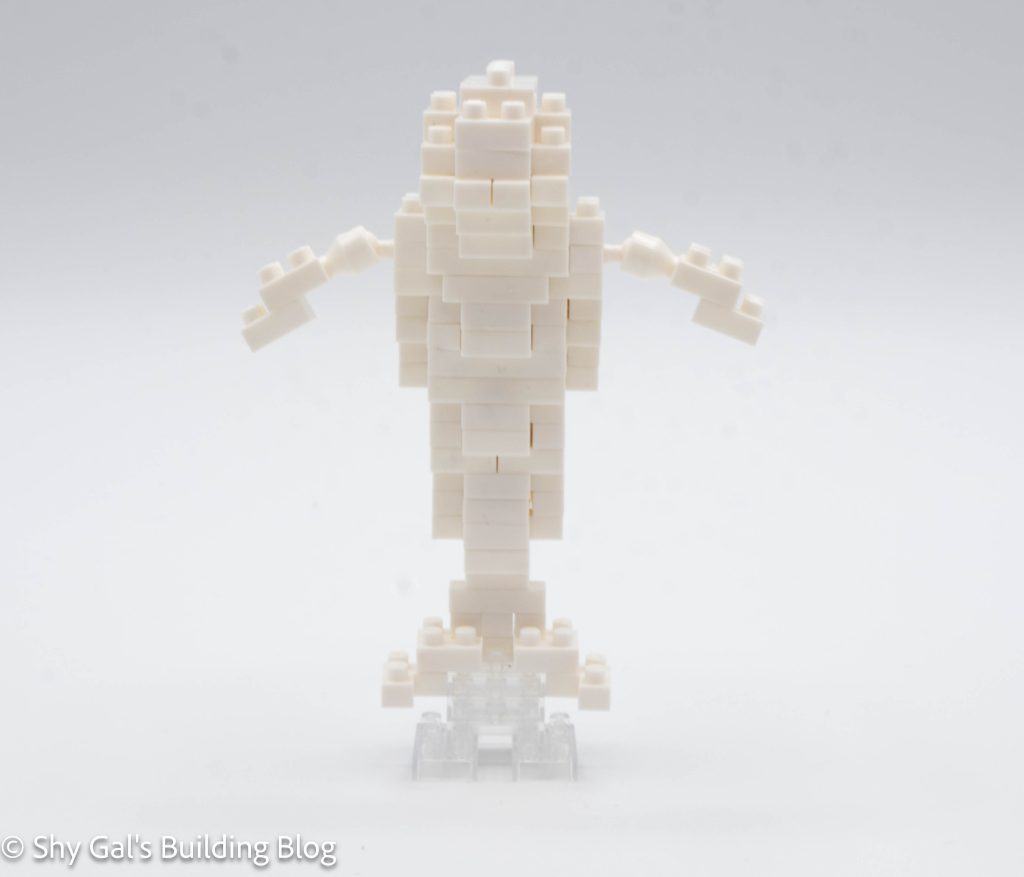
I purchased this kit open from Japan. It is not a very common kit, so I was excited to simply get a kit with the instructions. The finished photographed build may have some discoloration because it was built before I didn’t have control of the environment.
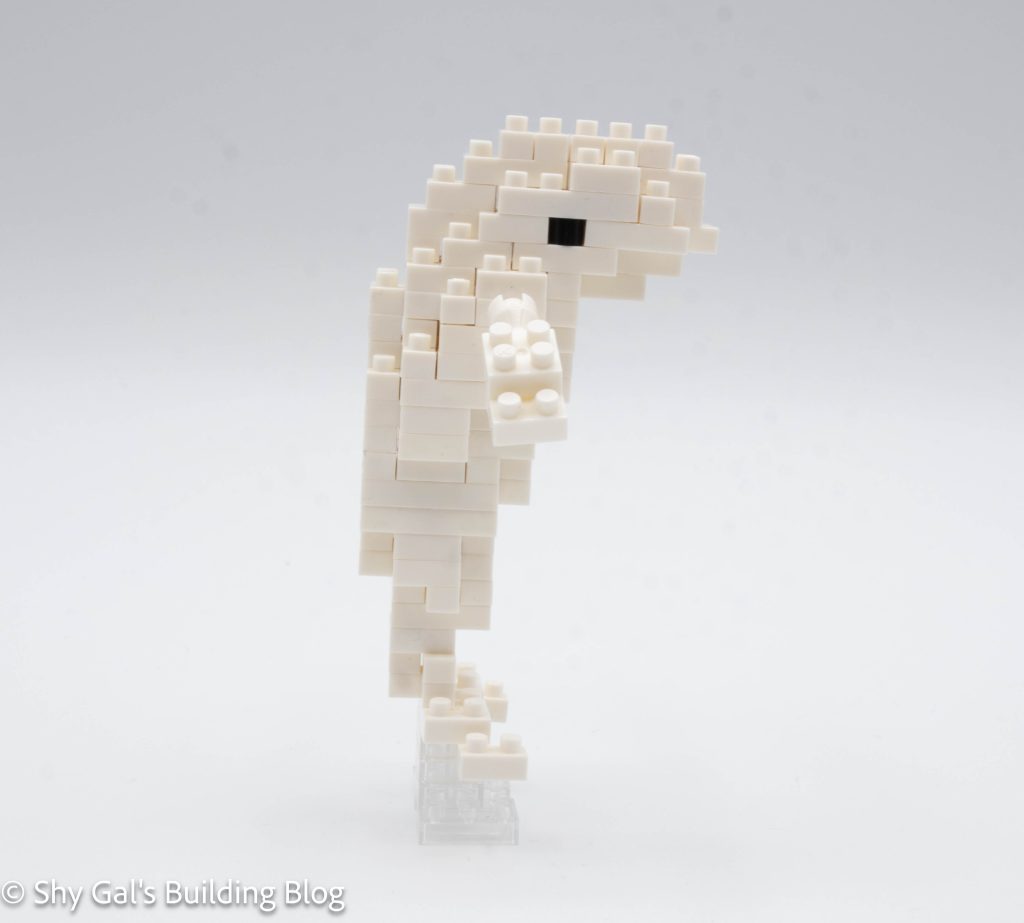
This beluga build is very unique amongst the large sea animals. Most of the sea animals are down on their stomachs. This build has the beluga up on its tail.
Since the beluga is standing on its tail, the build is basically a tower of bricks. The tower is much more narrow at the bottom than at the top. Building the tower consists of adding layers from a single 2×3 brick.
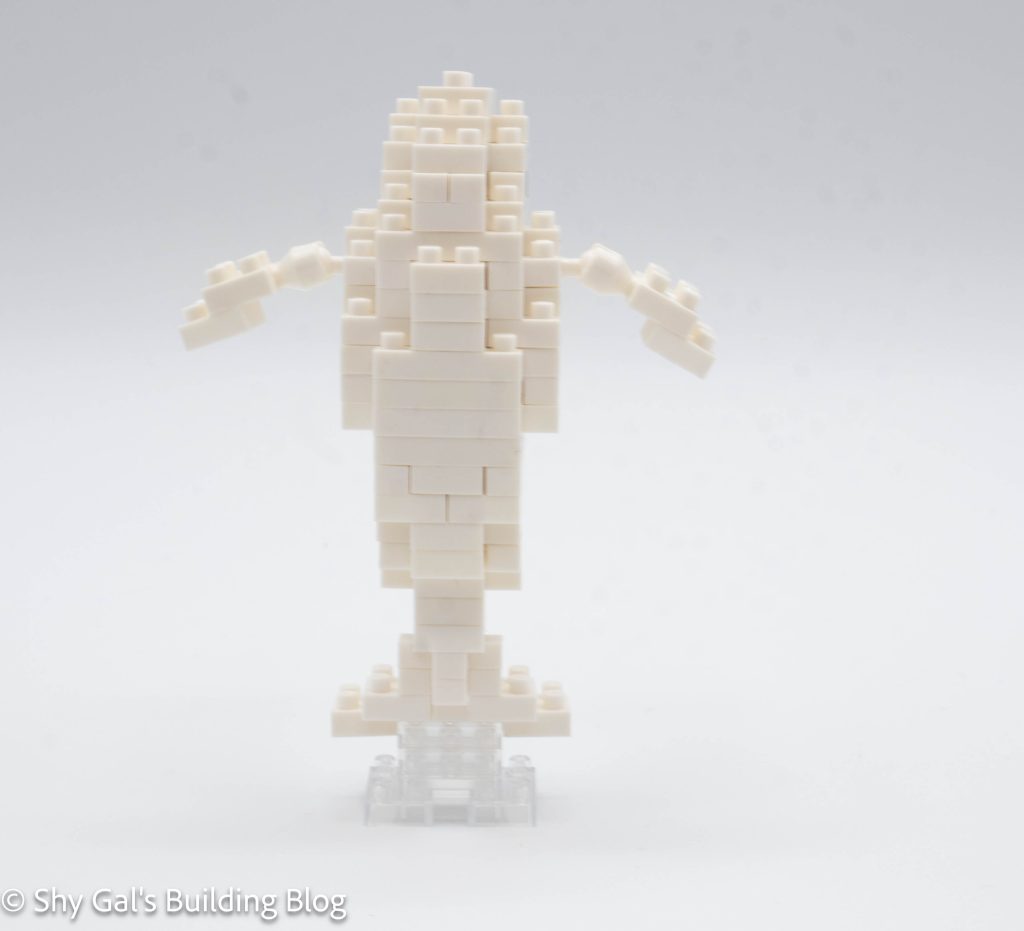
Building up from the 2×3 brick is very straightforward. The instructions are very clear, and it is easy to tell which bricks to add. There were also minimal places where bricks needed to be lined up or centered.
The only break in building the tower is to add the flippers to the side of the build via ball joints.
Once the main body of the beluga is built, the final step is to add the base and tail. Building the section is pretty straightforward. However, it is hard to tell where the tail section should connect to the main body. Based on the photos, I lined the tail with the back of the whale so has a smooth connection. However, it is possible that there is supposed to be a step between the back of the whale and the tail.
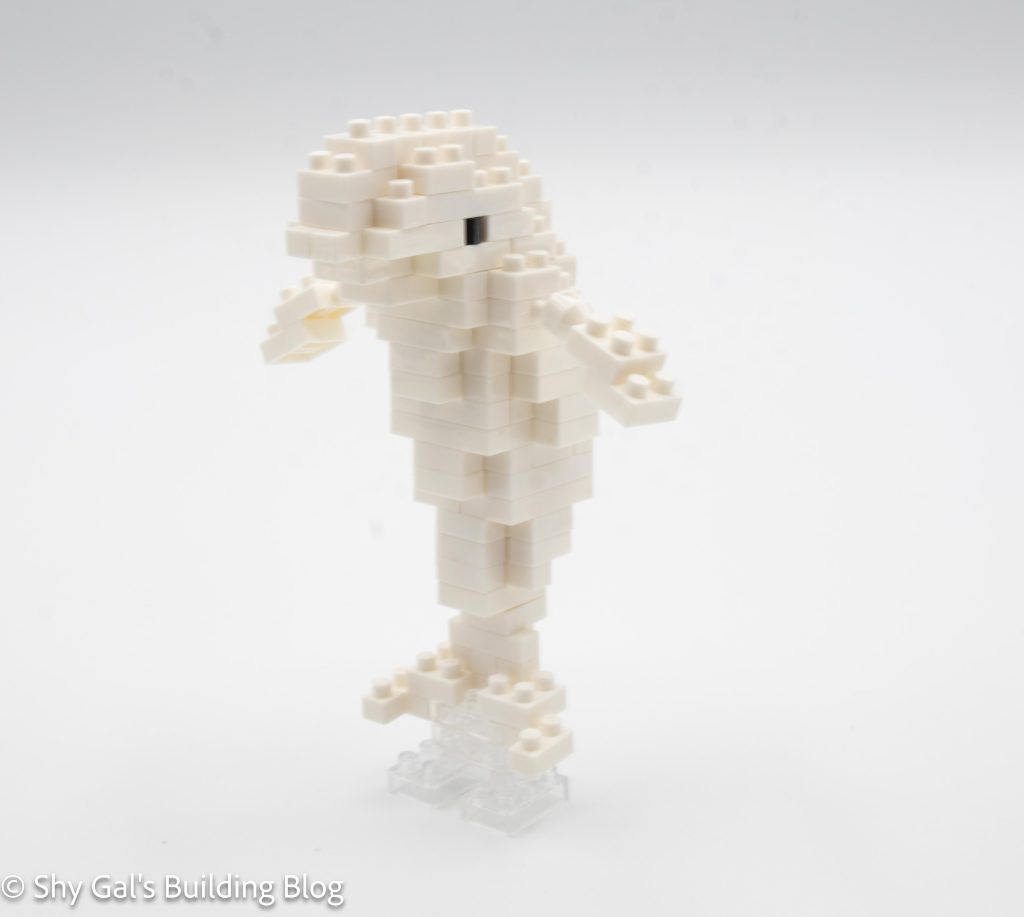
Things I liked:
- I really like the unique pose of the whale
Things I didn’t like:
- It isn’t clear how to connect the tail and body sections
